D.Pharmacy 1st Year Practical Manual
Original price was: ₹999.00.₹99.00Current price is: ₹99.00.
Diploma in Pharmacy [ As Per New Syllabus ER-20 ]
Pharmaceutics Practical Manual
Practical 1 : How to handle and refer the official “ Indian Pharmacopoeia “ for retrieving formulas and procedures
Practical 2 : To prepare and submit 100 ml of simple syrup of I.P 1996
Practical 2.2 : To prepare piperazine citrate elixir
Practical 2.3 : To Prepare aqueous iodine solution
Practical 3 : To formulate castor oil emulsion
Practical 3.2 : To Prepare cod liver oil emulsion
Practical 4 A : To formulate calamine lotion
Practical 4 B : To formulate magnesium hydroxide mixture
Practical 5 A : To prepare Simple Ointment
Practical 5 B : To formulate sulphur ointment
Practical 6 : To Formulate Cetrimide Cream
Practical 7 : To formulate sodium alginate gel
Practical 8 A : To formulate turpentine liniment
Practical 8 B : To formulate white liniment BPC
Practical 9 A : To formulate effervescent powder granules
Practical 9 B : To formulate dusting powder
Practical 10 A : To formulate normal saline (sodium chloride)
Practical 10 B : To formulate calcium gluconate injection
Practical 11 : To formulate tetracycline capsule
Practical 12 : To formulate paracetamol tablet
Practical 13 A : To prepare 50g of cold cream
Practical 13 B : To formulate general purpose shampoo
Practical 13 C : To formulate lotion
Practical 13 D : To formulate toothpaste
Practical 13 E : To formulate facewash
Practical 14 : To demonstrate various stages of tablet manufacturing processes (including tablet coating)
Practical 15 A : To study appropriate methods of usage and storage of inhalers
Practical 15 B : To demonstrate appropriate methods of usage and storage of spacers
Practical 15 C : To demonstrate appropriate methods of usage and storage of insulin pens
Practical 16 A : To demonstrate the diameter, size, shape and thickness tests of the tablets as per the monographs
Practical 16 B : To demonstrate the weight variation test of the tablets as per the monographs
Practical 16 C : To demonstrate the hardness test of the tablets as per the monographs
Practical 16 D : To demonstrate the friability test of the tablets as per the monographs
Practical 16 E : To demonstrate the disintegration test of the tablets as per the monographs
Practical 16 F : To demonstrate the dissolution test of the tablets as per the monographs
Practical 17 A : To study the appearance, size, shape and unique identification marking of the capsules as per the monographs
Practical 17 B : To demonstrate the content uniformity test of the capsules as per the Monographs
Practical 17 C : To demonstrate the uniformity of mass test of the capsules as per the monographs
Practical 17 D : To demonstrate the weight variation test of the capsules as per the monographs
Practical 17 E : To demonstrate the disintegration test of the capsules as per the monographs
Practical 17 F : To demonstrate the dissolution test of the capsules as per the monographs
Practical 17 G : To demonstrate the moisture permeation test of the capsules as per the monographs
Practical 18 : To demonstrate the quality control test and evaluation of the emulsion as per the monographs
Practical 19 A : To demonstrate the Leaker testing of sterile injections as per the monographs
Practical 19 B : To demonstrate the clarity testing of sterile injections as per the monographs
Practical 19 C : To demonstrate the pyrogen testing of sterile injections as per the monographs
Practical 19 D : To demonstrate the sterility testing of sterile injections as per the monographs
Practical 19 E : To demonstrate the particulate matter monitoring of sterile injections as per the monographs
Pharmaceutical Chemistry Practical Manual
Practical 1 : To study the general glassware used in lab
Practical 1A : To perform limit test for chloride in given compound
Practical 1B : To perform limit test for sulphate in given compound
Practical 1C : To perform the limit test for iron
Practical 1D : To perform the limit test for heavy metals
Practical 2A : To perform the identification test of Cations
Practical 2B : To perform the identification test of anions
Practical 3A : To prepare and standardize sodium hydroxide solution
Practical 3B : To prepare and standardise potassium permanganate standard solution
Practical 4A : To perform the assay of the given sample of ferrous sulphate by redox titration
Practical 4B : To perform the assay of calcium gluconate by complexometric titration
Practical 4C : To perform the assay of sodium chloride by precipitation titration
Practical 4D : To perform the assay of Ascorbic acid by lodometry
Practical 4E : To perform the assay of Ibuprofen by Alkalimetry
Practical 5A : To determine the melting point of organic compounds like naphthalene and benzoic acid
Practical 5B : To determine the boiling point of organic compounds like benzene and benzaldehyde
Practical 6A : To prepare and submit benzoic acid from benzamide
Practical 6B : To prepare and submit picric acid from phenol
Practical 7A : To perform the identification test and test for purity of aspirin
Practical 7B : To perform the identification test and test for purity of caffeine
Practical 7C : To perform the identification test and test for purity of paracetamol
Practical 7D : To perform the identification test and test for purity of sulfanilamide
Practical 8A : To perform systematic qualitative analysis of organic compounds
Practical 8B : To determine special elements in the given sample
Human Anatomy and Physiology Practical Manual
Practical 1 : To determine the study of compound microscope
Practical 2 : To demonstrate the general techniques for the collection of blood
Practical 3 : To perform the microscopic examination of the given epithelial tissue slide
Practical 3.2 : To perform the microscopic examination of the given cardiac muscle tissue slide
Practical 3.3 : To perform the microscopic examination of the given smooth muscle tissue slide
Practical 3.4 : To perform the microscopic examination of the given skeletal muscle tissue slide
Practical 3.5 : To perform the microscopic examination of the given connective tissue slide
Practical 3.6 : To perform the microscopic examination of the given nervous tissue slide
Practical 4 : To study the human skull bone
Practical 4.2 : To study the bones of the trunk, ribs, sternum and vertebral column of humans
Practical 4.3 : To study the bones of upper limbs
Practical 4.4 : To study the bones of lower limbs
Practical 4.5 : To study the given model of human joints
Practical 5 : To determine blood group of given sample
Practical 6 : To report ESR of your blood
Practical 7 : To determine haemoglobin content of blood
Practical 8 : To perform and report clotting time and bleeding time of the blood
Practical 9 : To determine the WBC count of blood
Practical 10 : To determine the RBC count of blood
Practical 11 : To determine the differential count of blood
Practical 12 : To perform and report blood pressure of your subject
Practical 13 : To determine the body temperature of a subject
Practical 13.2 : To record of body temperature by using digital thermometer at various locations
Practical 13.3 : To record of body temperature by using IR thermometer at various locations
Practical 14 : To record the Pulse rate /Heart rate at various locations in the body, before and after exertion
Practical 15 : To record of respiratory rate
Practical 16 : Recording of pulse oxygen (before and after exertion)
Practical 17 : To record force of air expelled using peak flow metre
Practical 18 : To measure height of an individual
Practical 18.2 : To measure weight of an individual
Practical 18.3 : To measure BMI of an individual
Practical 19A : To study the given model of human cardiovascular system
Practical 19B : To study the given model of human respiratory system
Practical 19C : To study the given model of human digestive system
Practical 19D : To study the given model of human urinary system
Practical 19E : To study the given model of endocrine system
Practical 19F : To study the given model of female reproductive system
Practical 19G : To study the given model of male reproductive system
Practical 19H : To study the given model of human central nervous system
Practical 19I : To study the given model of human eye
Practical 19J : To study the given model of human ear
Practical 19K : To study the given model of skin anatomy
Pharmacognosy Practical Manual
Practical 1A : To study morphological characters of Ispaghula
Practical 1B : To study morphological characters of Senna
Practical 1C : To study morphological characters of Coriander
Practical 1D : To study morphological characters of Fennel
Practical 1E : To study morphological characters of Cardamom
Practical 1F : To study morphological characters of Ginger
Practical 1G : To study morphological characters of Nutmeg
Practical 1H : To study morphological characters of Black pepper
Practical 1I : To study morphological characters of Cinnamon
Practical 1J : To study morphological characters of Clove
Practical 1K : To study morphological characters of Ephedra
Practical 1L : To study morphological characters of Rauwolfia
Practical 1M : To study morphological characters of Gokhru
Practical 1N : To study morphological characters of Punarnava
Practical 1O : To study morphological characters of Cinchona
Practical 1P : To study morphological characters of Agar
Practical 2A : To perform the gross anatomical study (transverse section) of Ajwain
Practical 2B : To perform the gross anatomical study (transverse section) of Datura
Practical 2C : To perform the gross anatomical study (transverse section) of Cinnamon
Practical 2D : To perform the gross anatomical study (transverse section) of Cinchona
Practical 2E : To perform the gross anatomical study (transverse section) of Coriander
Practical 2F : To perform the gross anatomical study (transverse section) of Ashwagandha
Practical 2G : To perform the gross anatomical study (transverse section) of Liquorice
Practical 2H : To perform the gross anatomical study (transverse section) of Clove
Practical 2I : To perform the gross anatomical study (transverse section) of Curcuma
Practical 2J : To perform the gross anatomical study (transverse section) of Nux vomica
Practical 2K : To perform the gross anatomical study (transverse section) of Vasaka
Practical 3A : To perform the physical and chemical tests of Asafoetida
Practical 3B : To perform the physical and chemical tests of Benzoin
Practical 3C : To perform the physical and chemical tests of Pale catechu
Practical 3D : To perform the physical and chemical tests of Black catechu
Practical 3E : To perform the physical and chemical tests of Castor oil
Practical 3F : To perform the physical and chemical tests of Acacia
Practical 3G : To perform the physical and chemical tests of Castor oil
Practical 3H : To perform the physical and chemical tests of Agar
Practical 3I : To perform the physical and chemical tests of Gaur gum
Practical 3J : To perform the physical and chemical tests of Gelatine
Social Pharmacy Practical Manual
Practical 1 : To study and understand the immunization schedule for infants and children
Practical 2 : To understand reproductive health and child health program
Practical 3 : To study about different types of family planning devices used
Practical 4 : To observe given slides of different microbes under the microscope
Practical 5 : To Study and Understand the oral Health and Hygiene
Practical 6 : To learn hand washing technique
Practical 7 : To study about using and disposal of various types of masks, PPE gear
Practical 8 : To study about menstrual hygiene and products used
Practical 9 : To study about first aid theory, basics, demonstration, and hands on training
Practical 9.2 : To study about different audio-visuals aids
Practical 9.3 : To practice BSL (Basic life support) systems, (SCA-Sudden Cardiac arrest, FBAO- Foreign body Airway obstruction, CPR, Defibrillation (using AED) (includes CPR, techniques, first responder)
Practical 10 : To study emergency for all medical emergency cases viz snake bite, dog bite, insecticide poisoning, fractures, burns, and epilepsy
Practical 11 : To study the role of Pharmacist in disaster management
Practical 12 : To study the market preparation of disinfectant and antiseptic used in daily life
Practical 12.2 : The market preparation of fumigants used in daily life
Practical 12.3 : To study the market preparation of antiviral agents and mosquito repellent used in daily life
Practical 13 : To study about the arthropods borne infection including Dengue and Malaria
Practical 13.2 : To study about respiratory infection (SARS, HINI, COVID-19) their sign. symptom and prevention
Practical 14 : To study the different types of water purification techniques used in present scenario
Practical 14.2 : To study about the use of different types of water testing equipment
Practical 14.3 : To study the importance/percentage/content of Potassium permanganate, used for the purification of well and tank
Practical 14.4 : To study the importance of bleaching powder, used for the purification of well and tank
Practical 15 : To counsel children on junk foods, balanced diet using information education and communication (IEC) counselling, etc. (simulation experiments)
Practical 16 : To study about various charts on nutrition, sources of various nutrients from locally available foods, calculation of caloric needs of different groups (e.g child, mother, sedentary lifestyle, etc.) and chart of glycemic index of foods
Practical 17 : To study about tobacco cessation, counselling and identify various tobacco containing products through charts/pictures
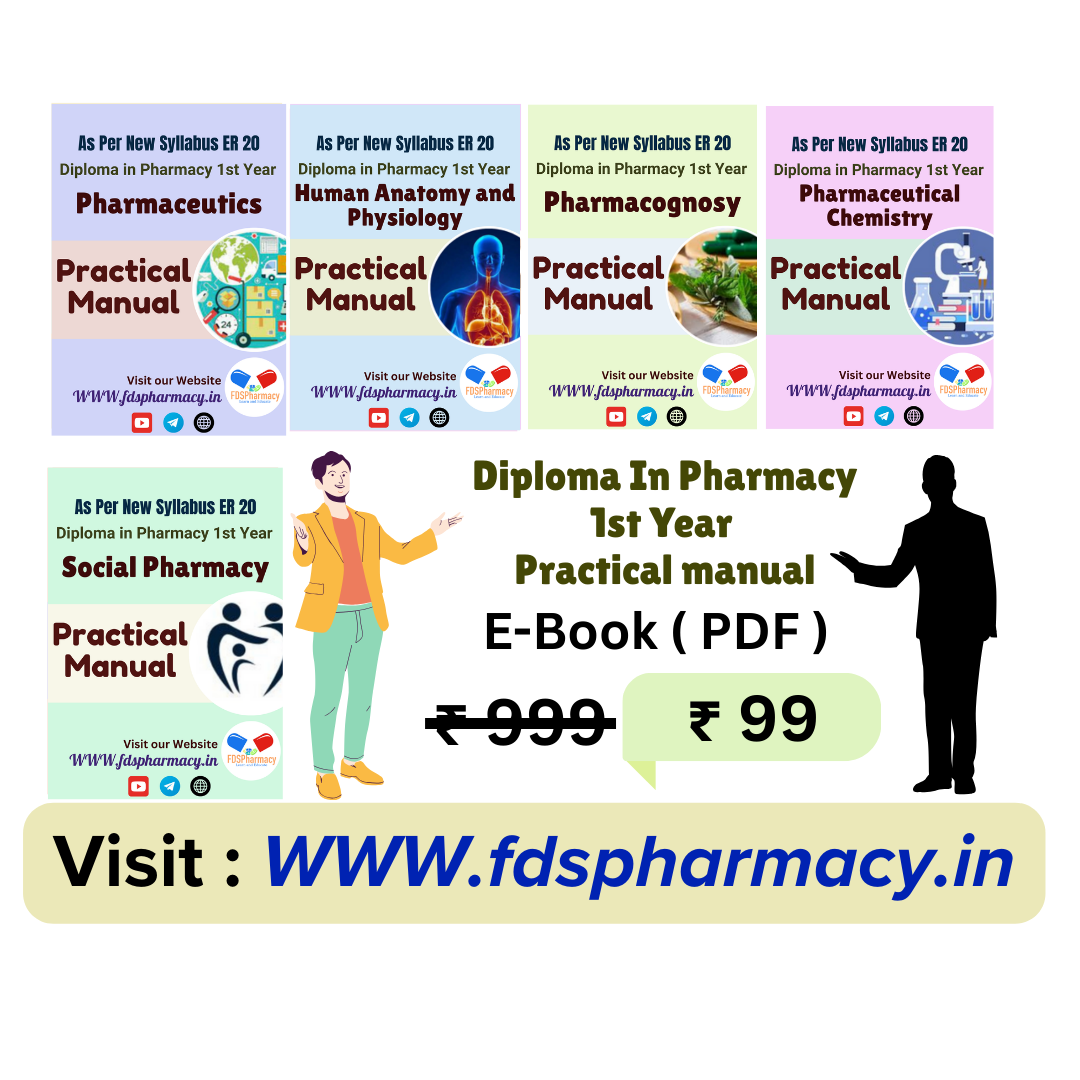
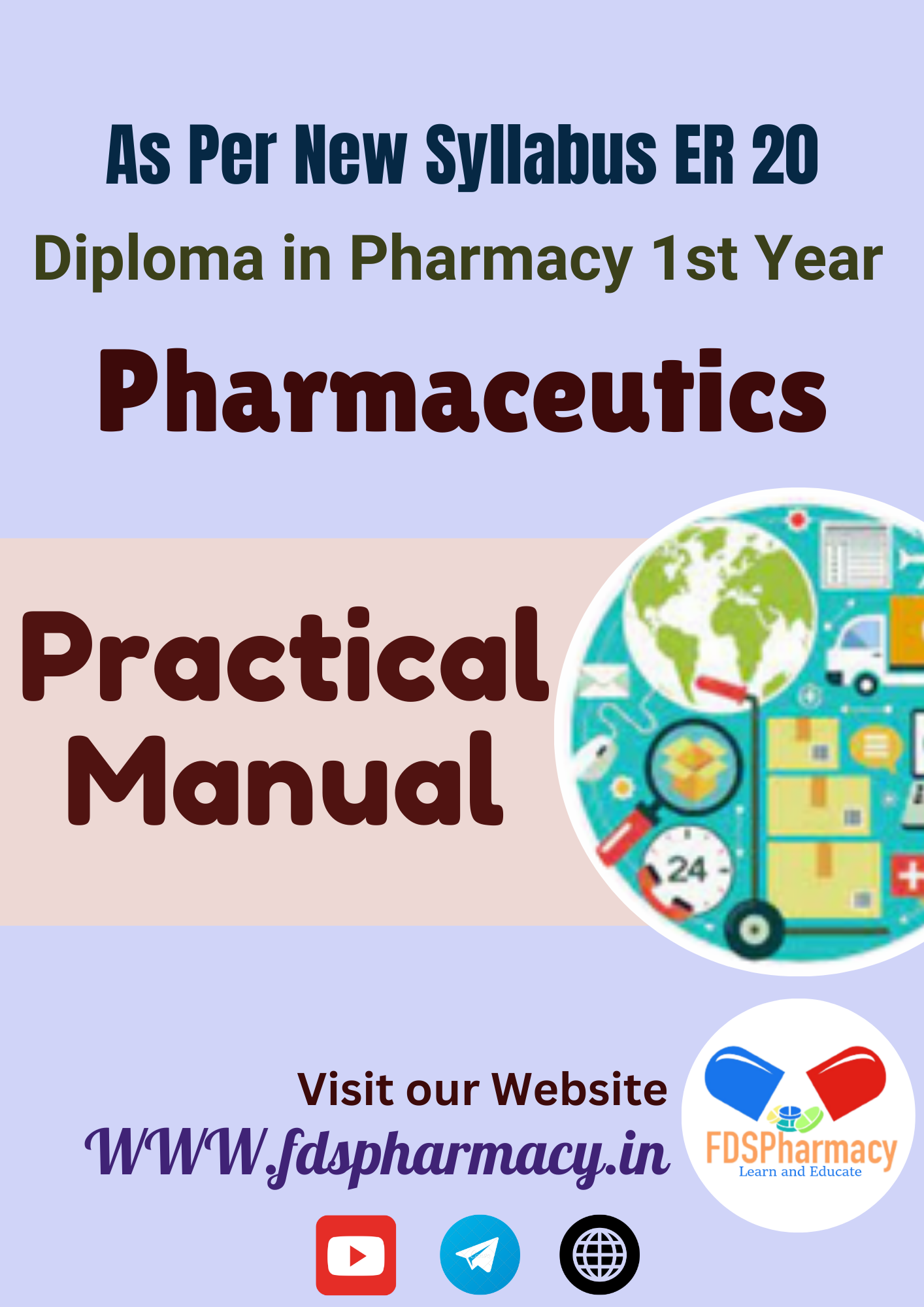
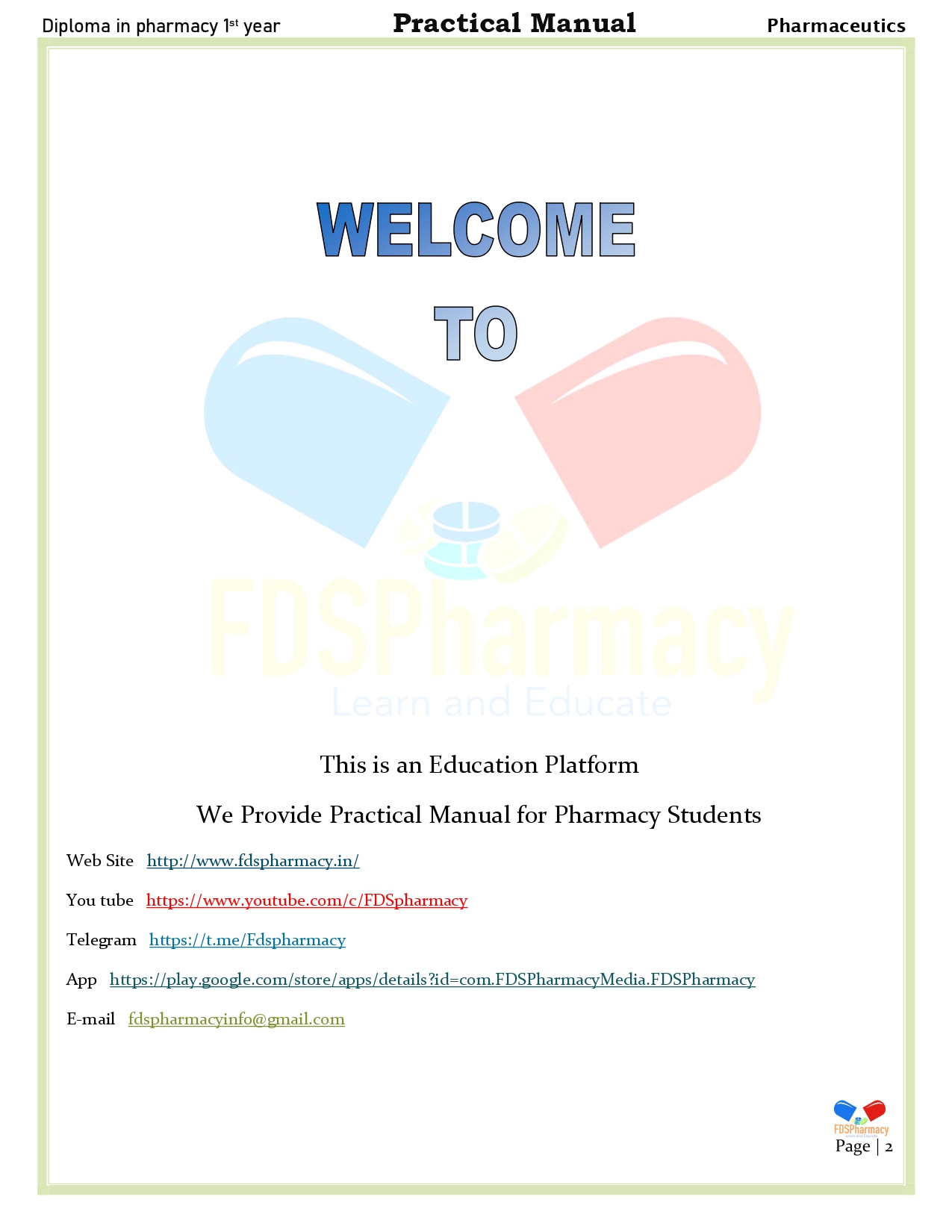
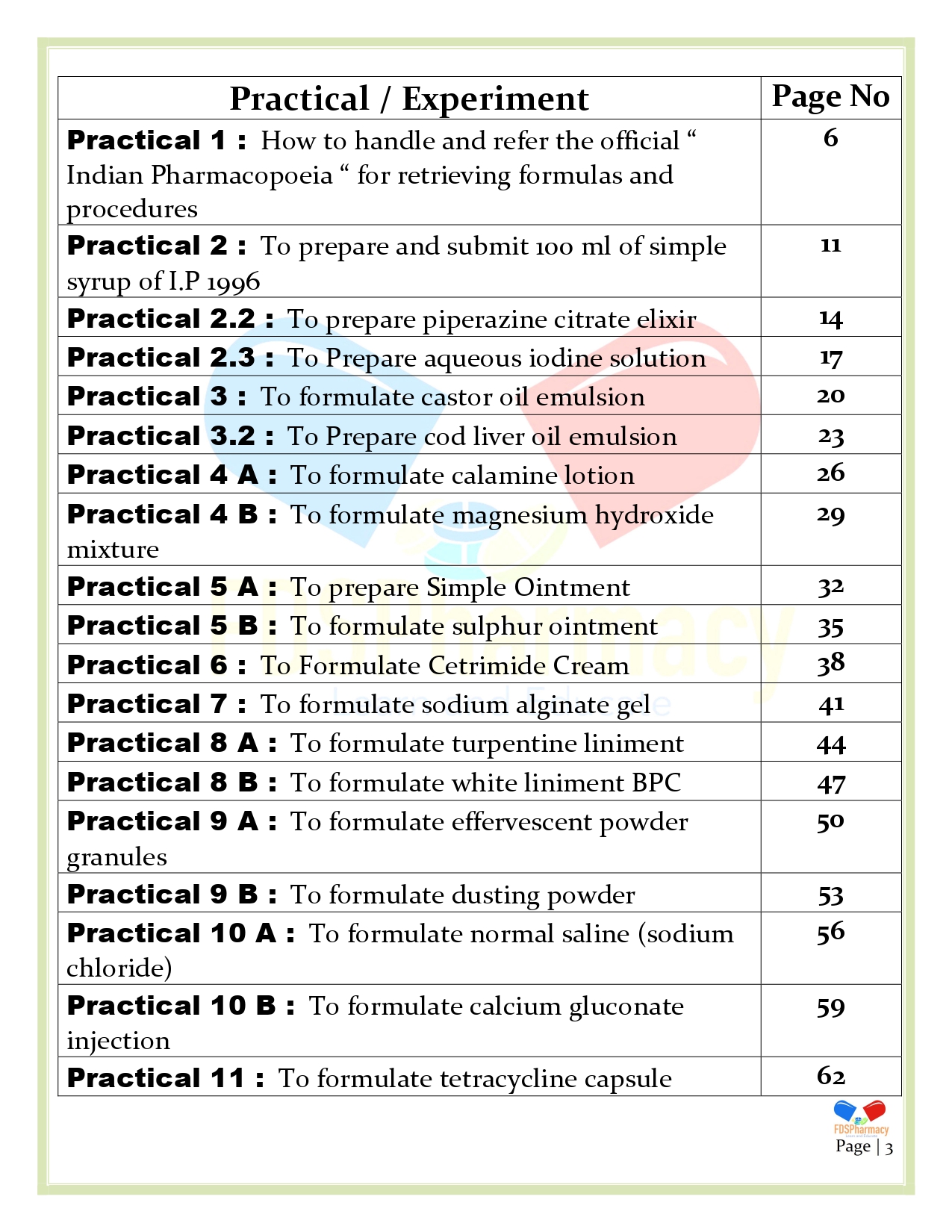
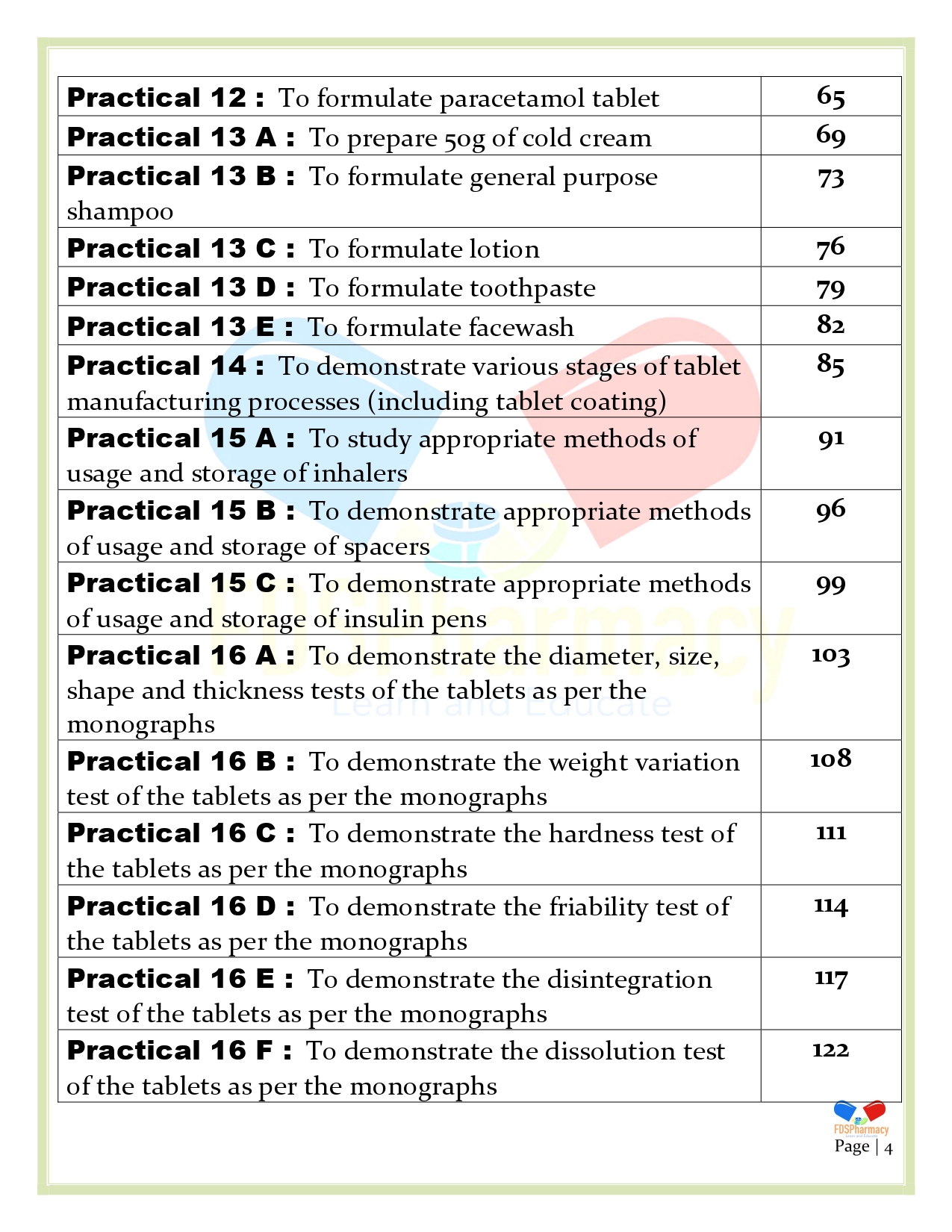
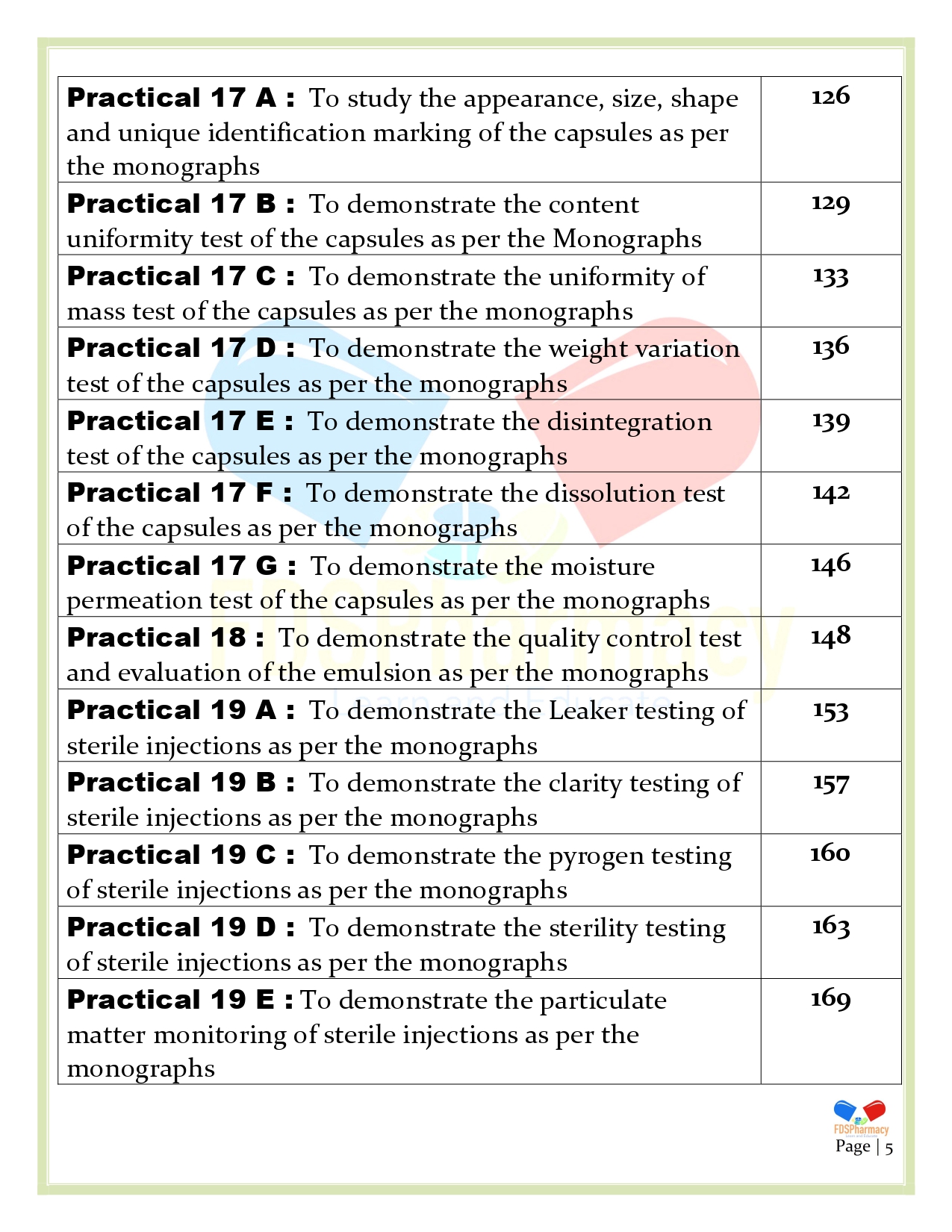
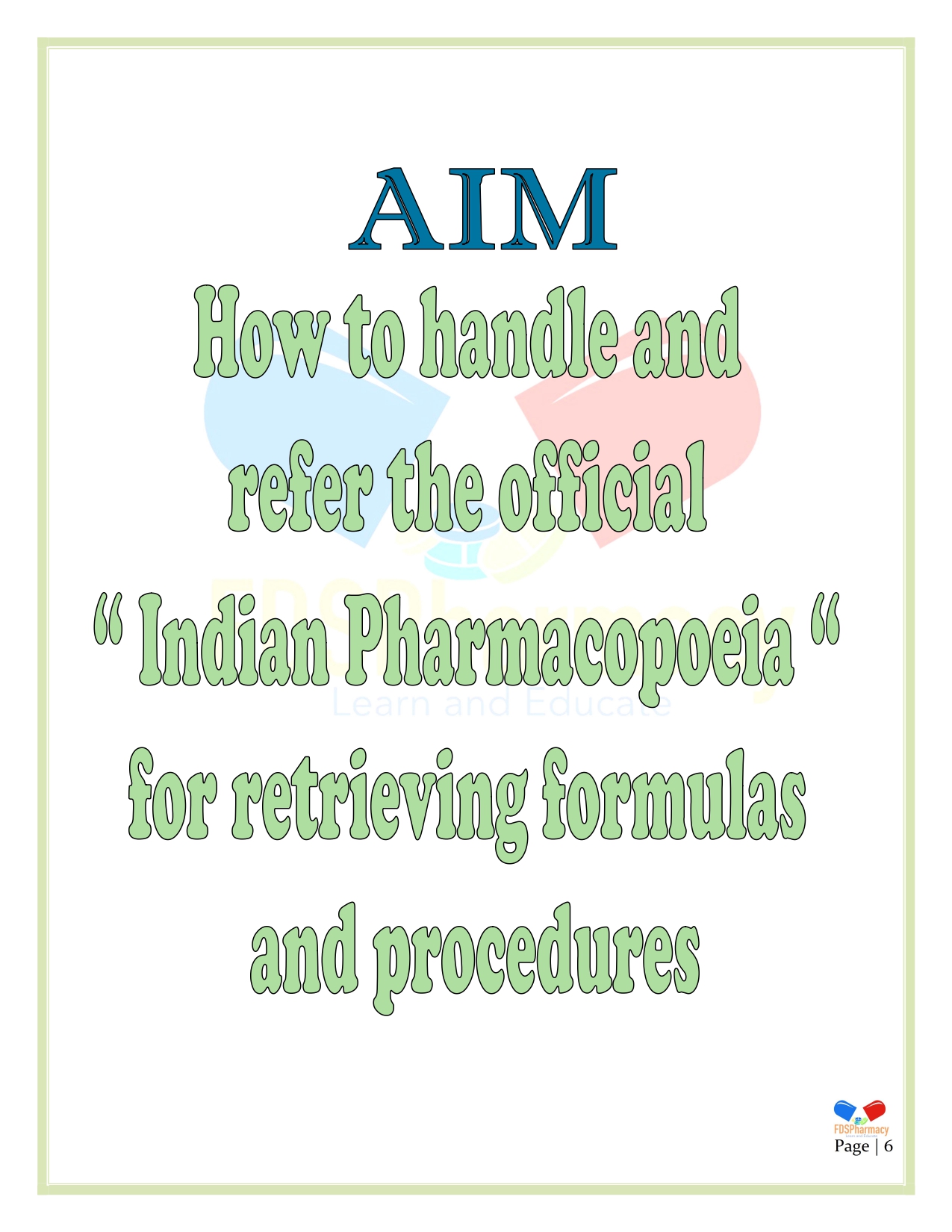
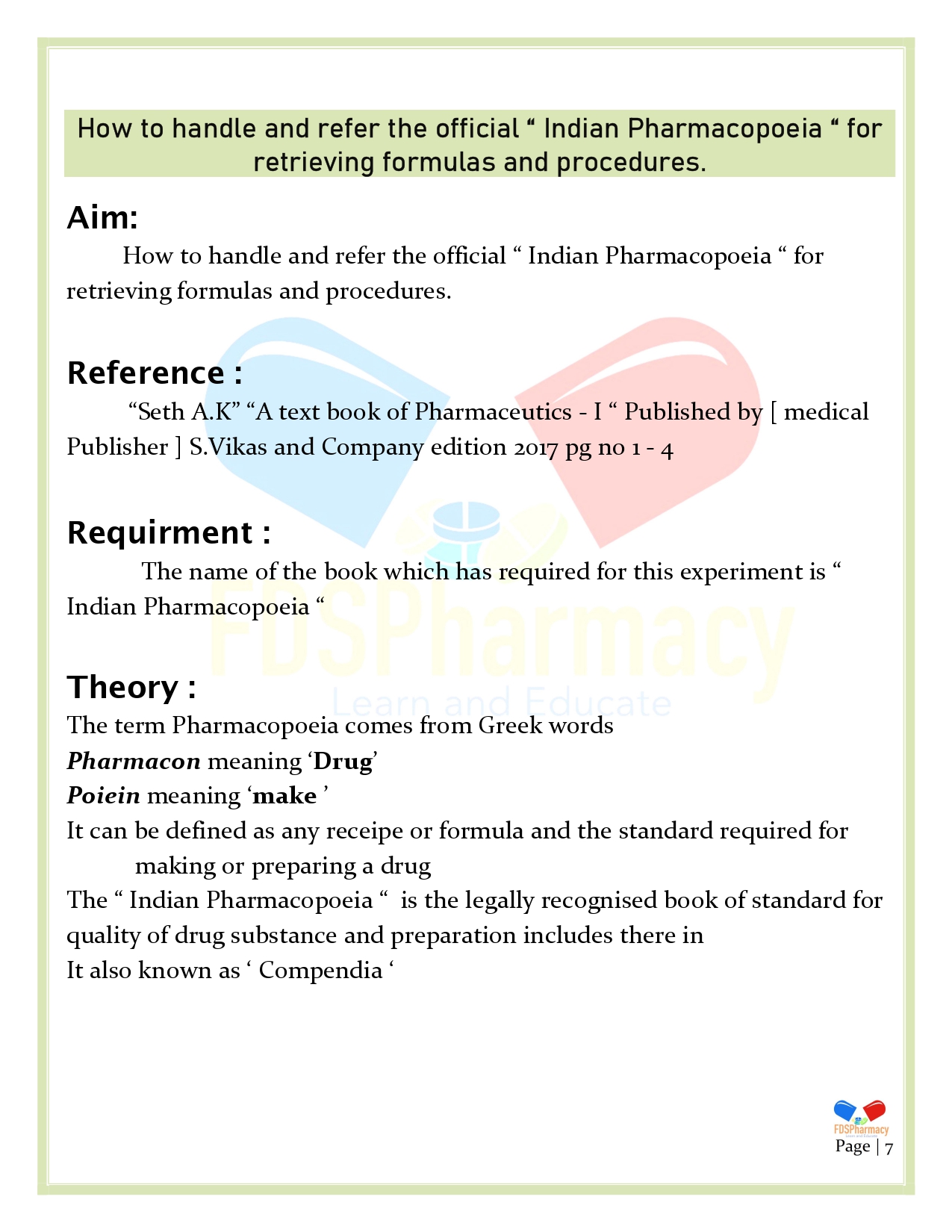
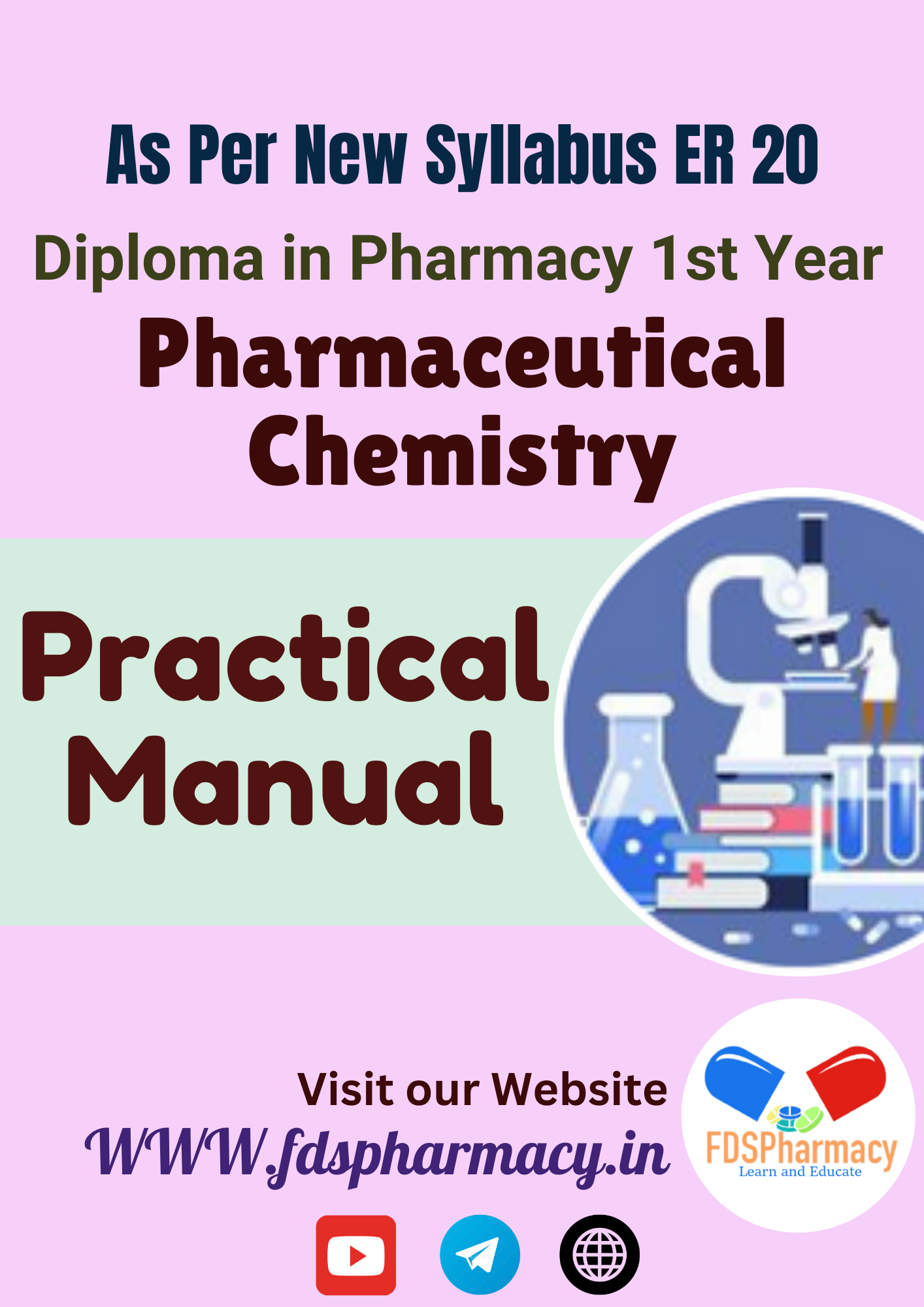
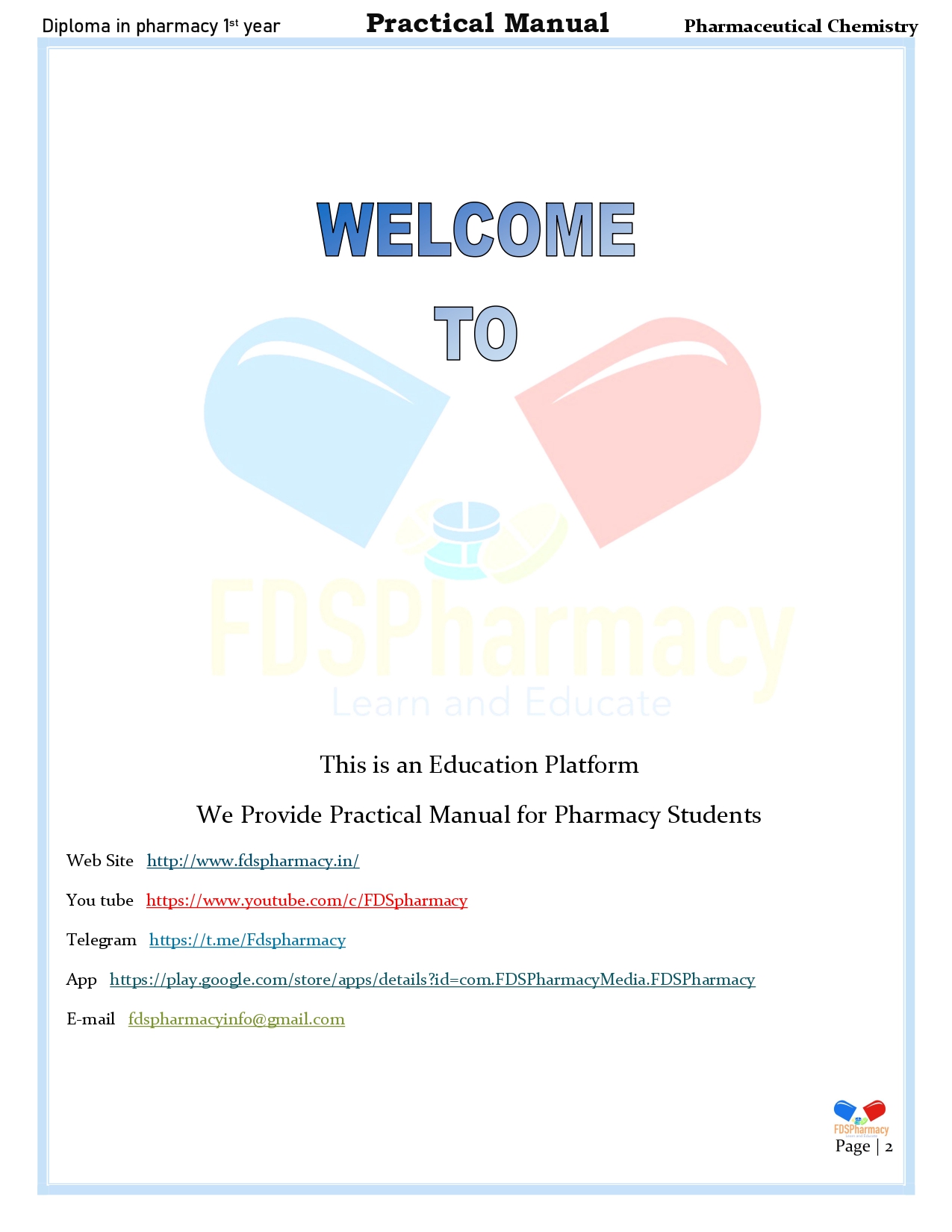
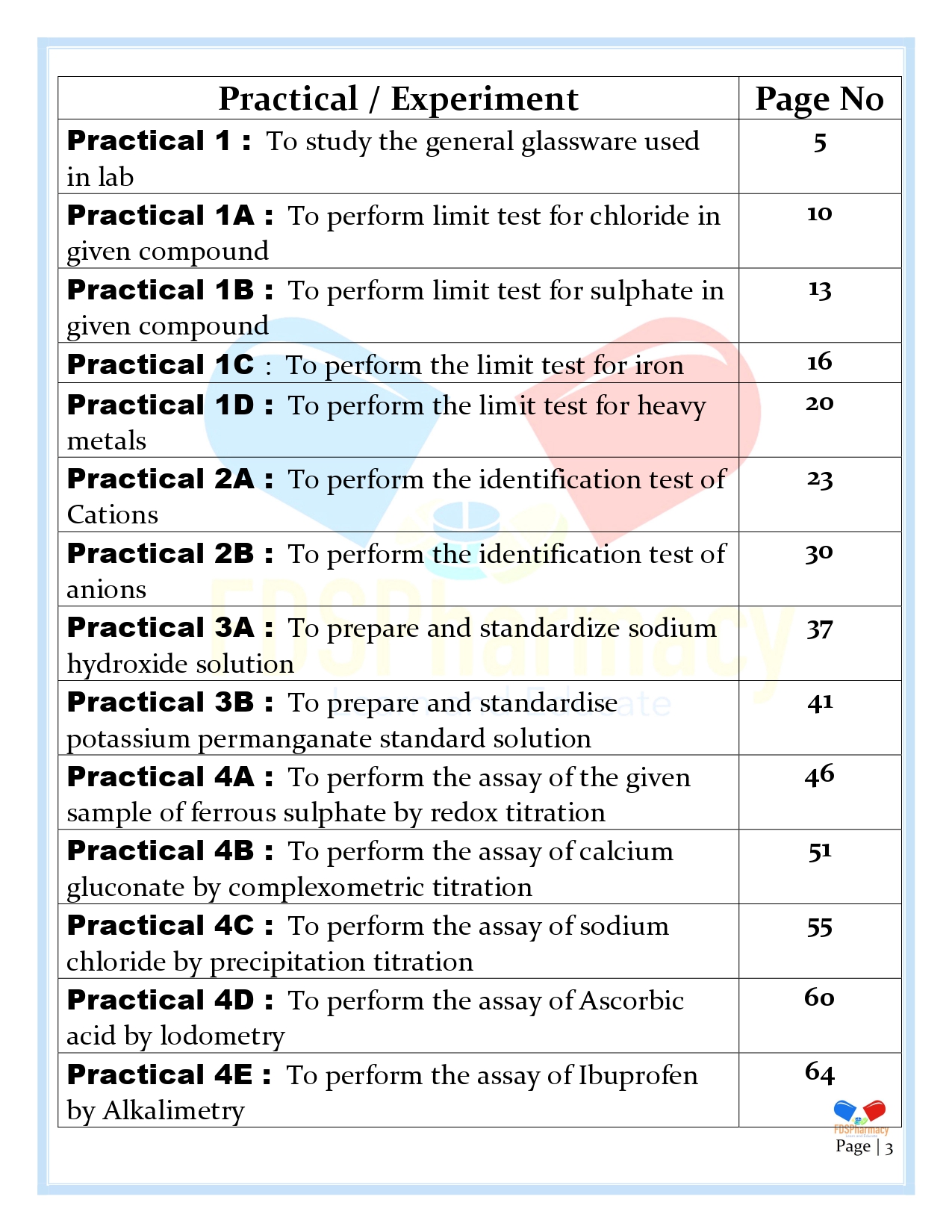
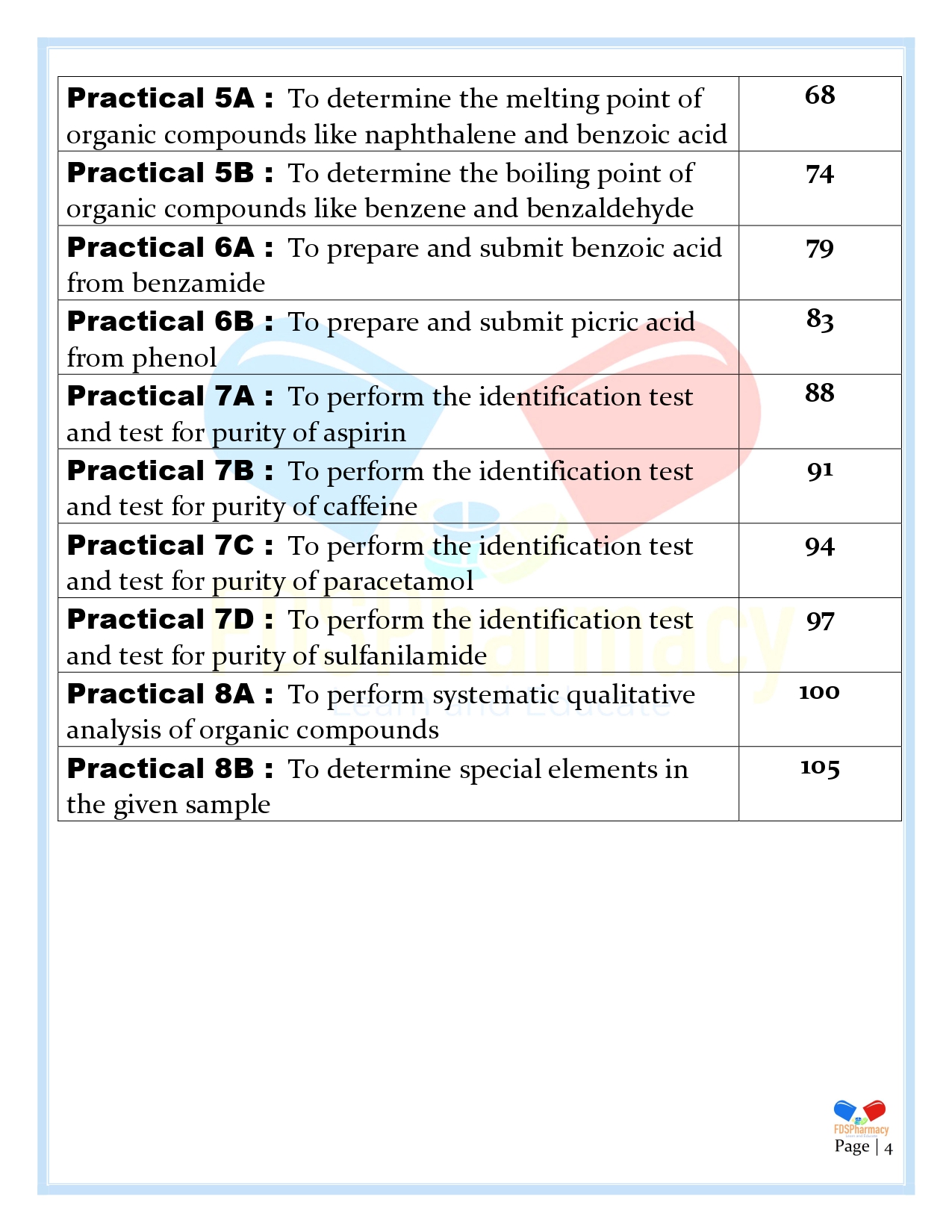
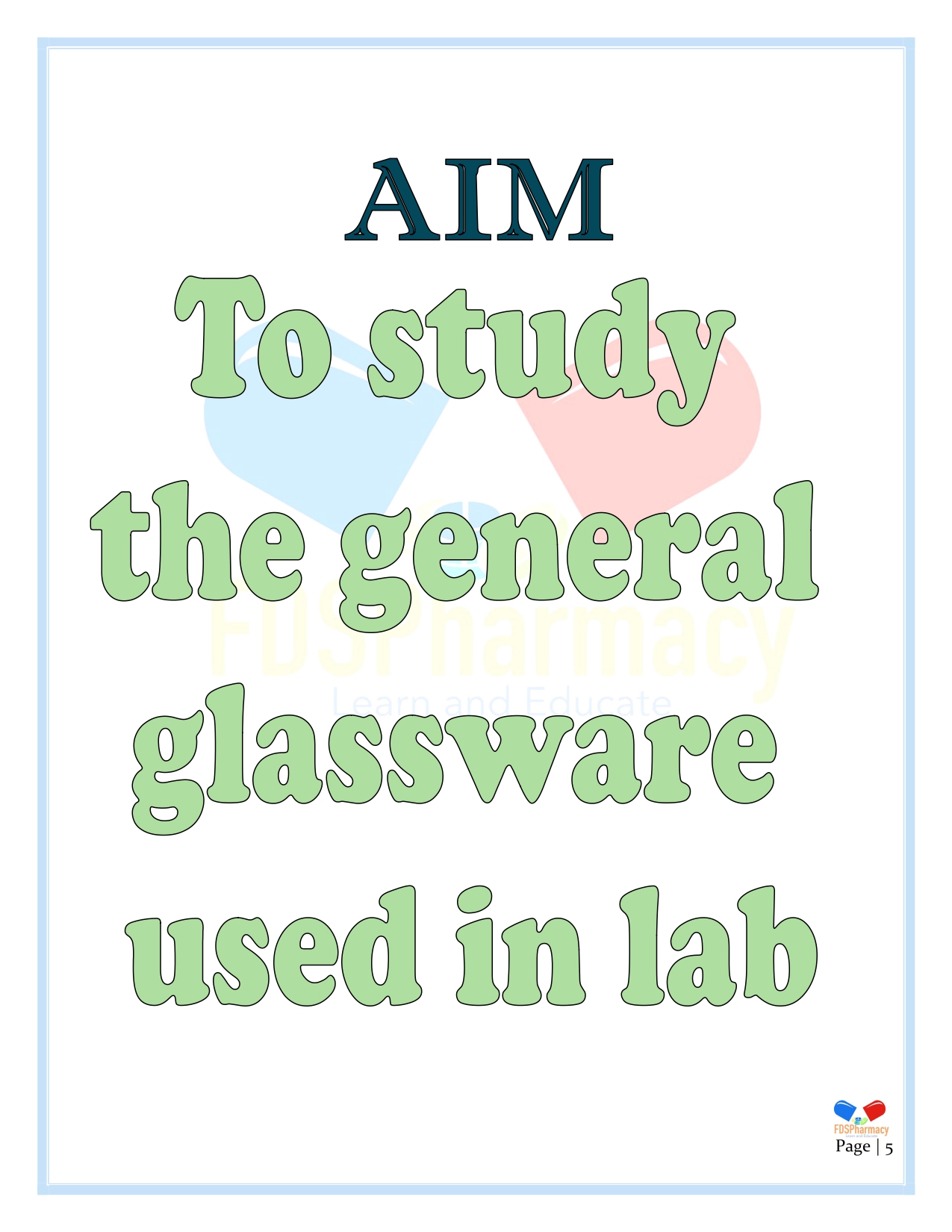
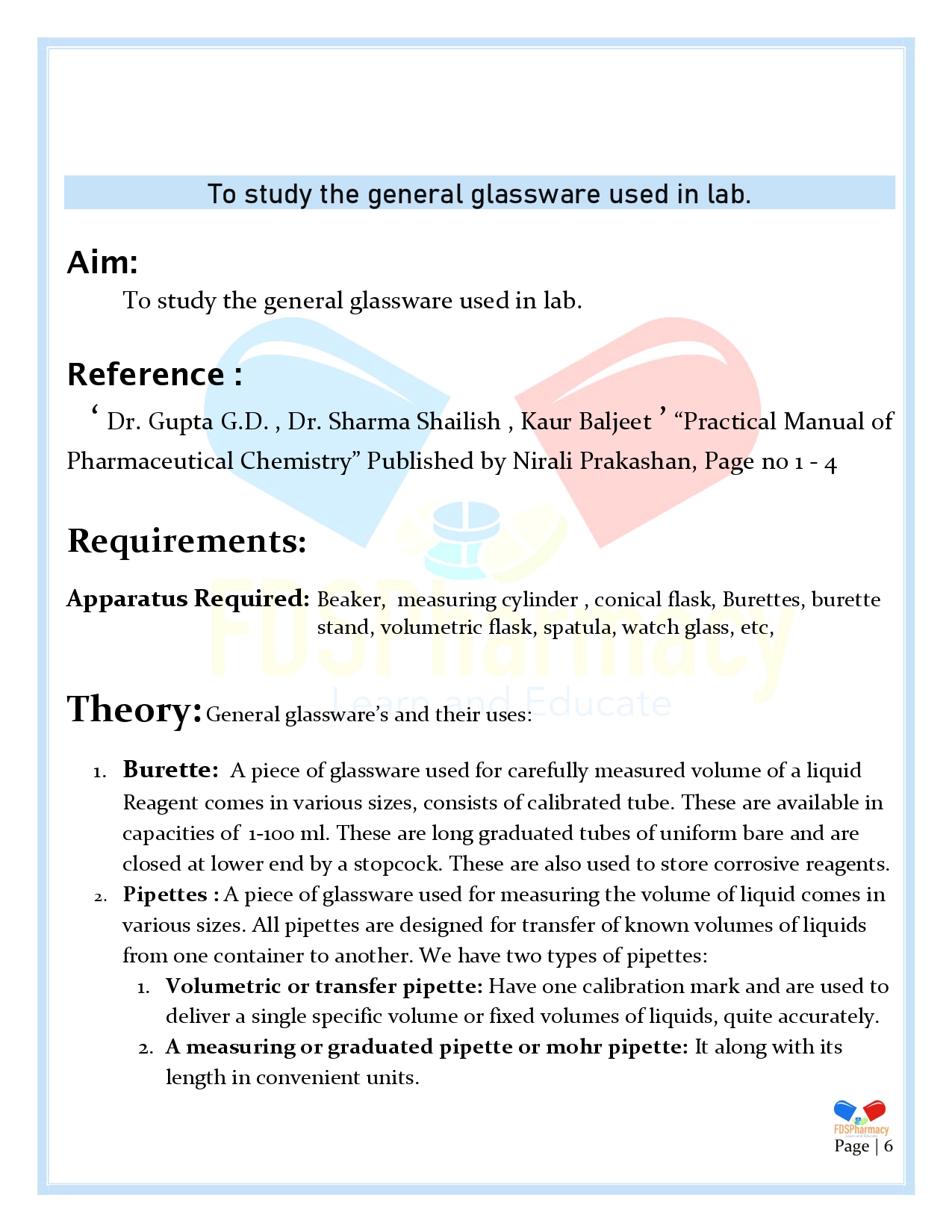
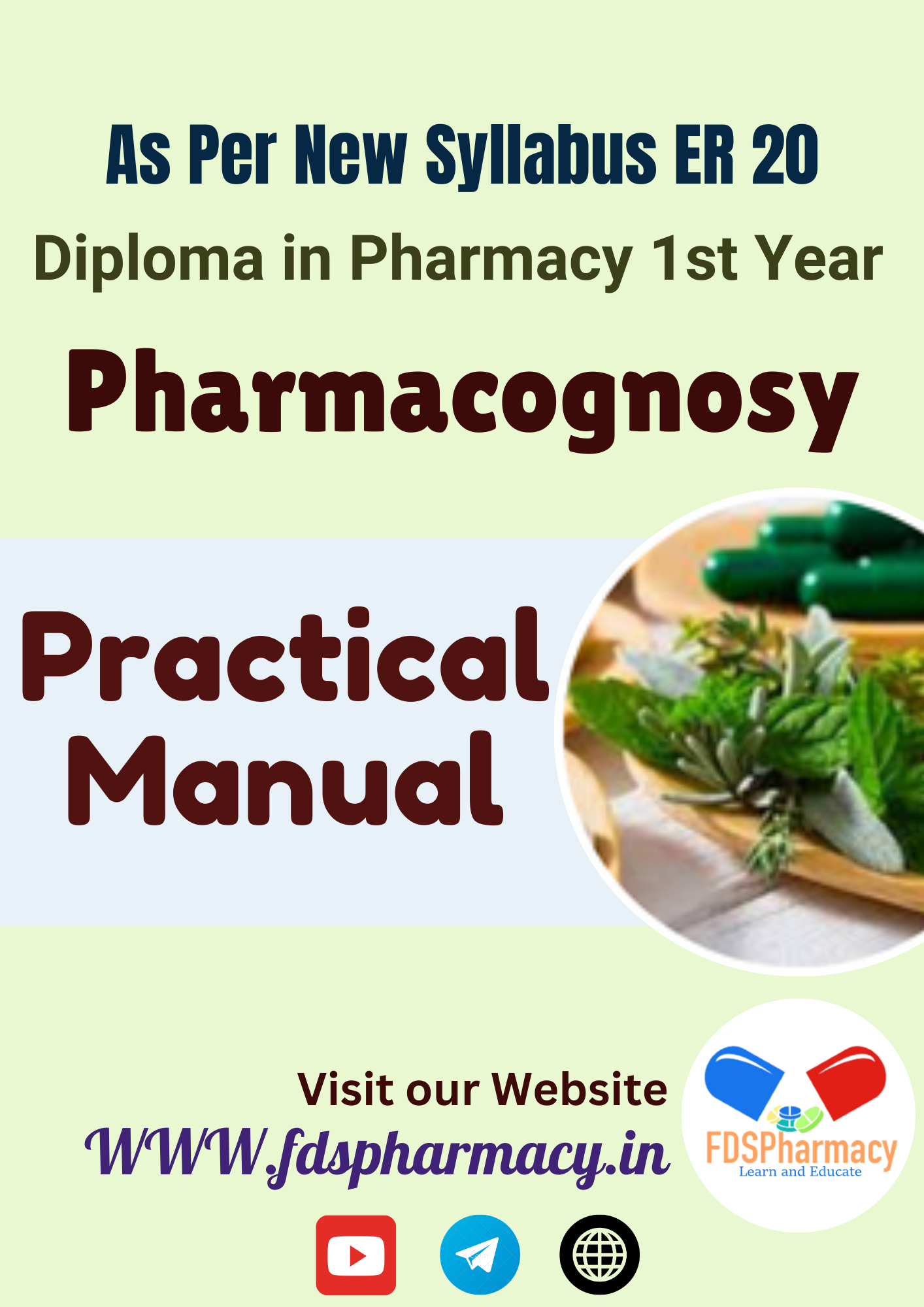
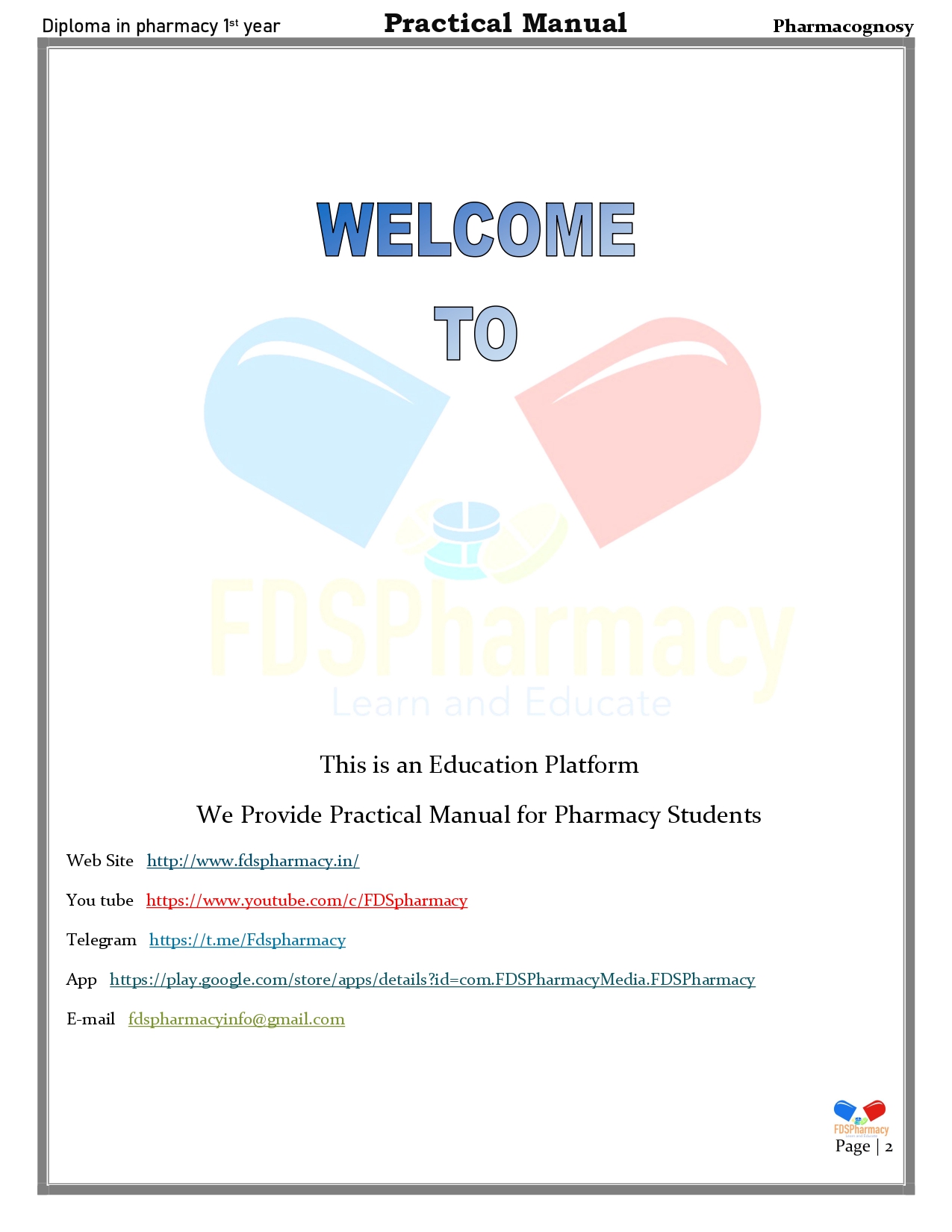
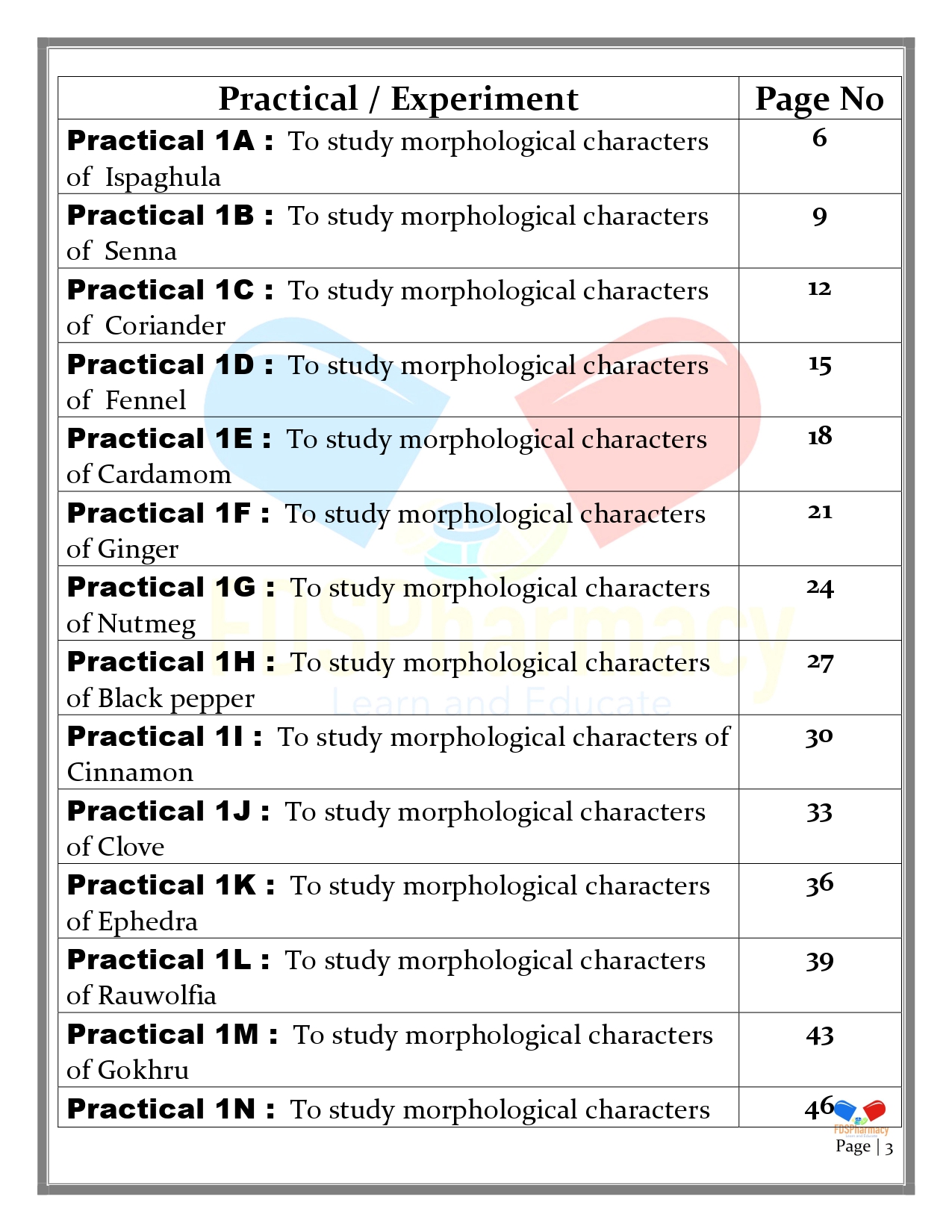
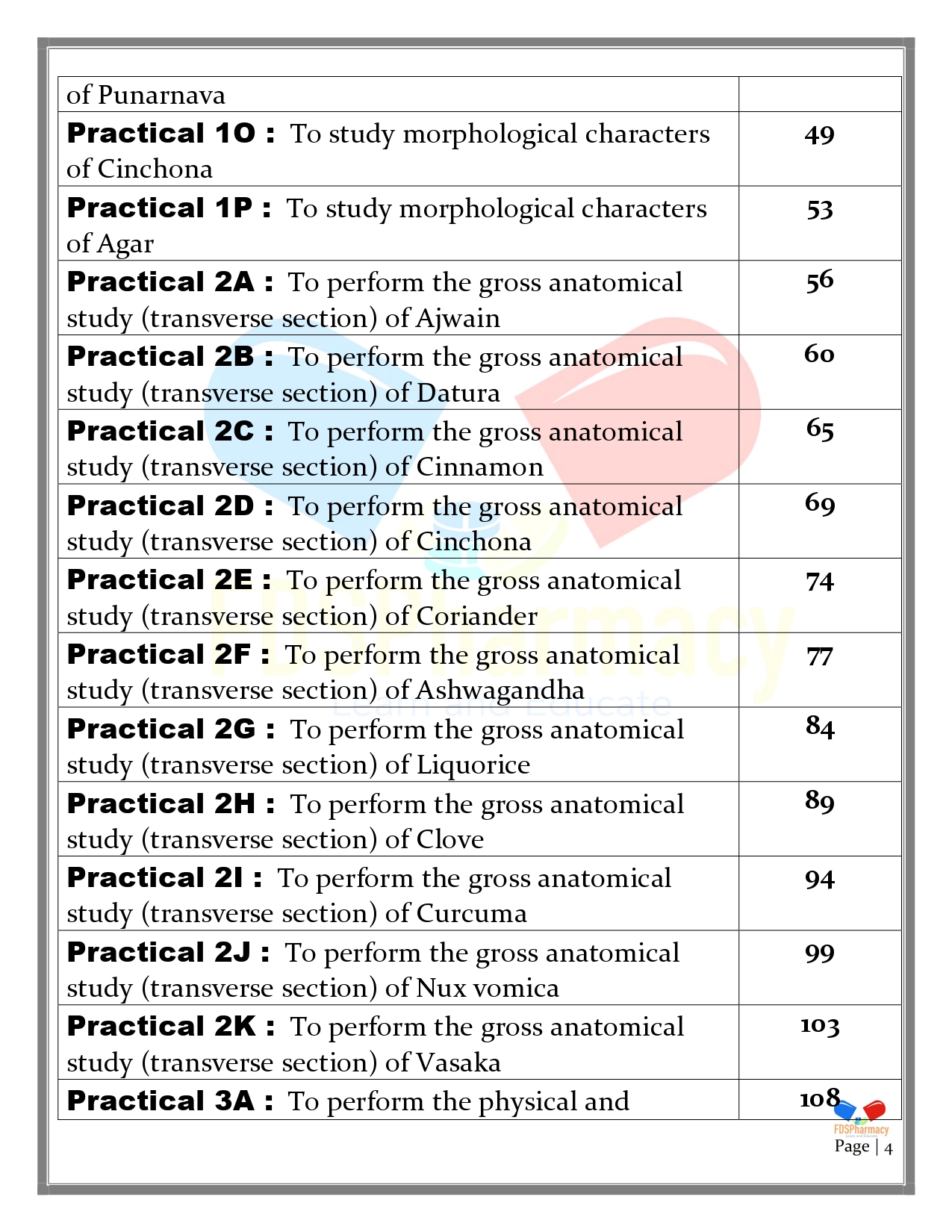
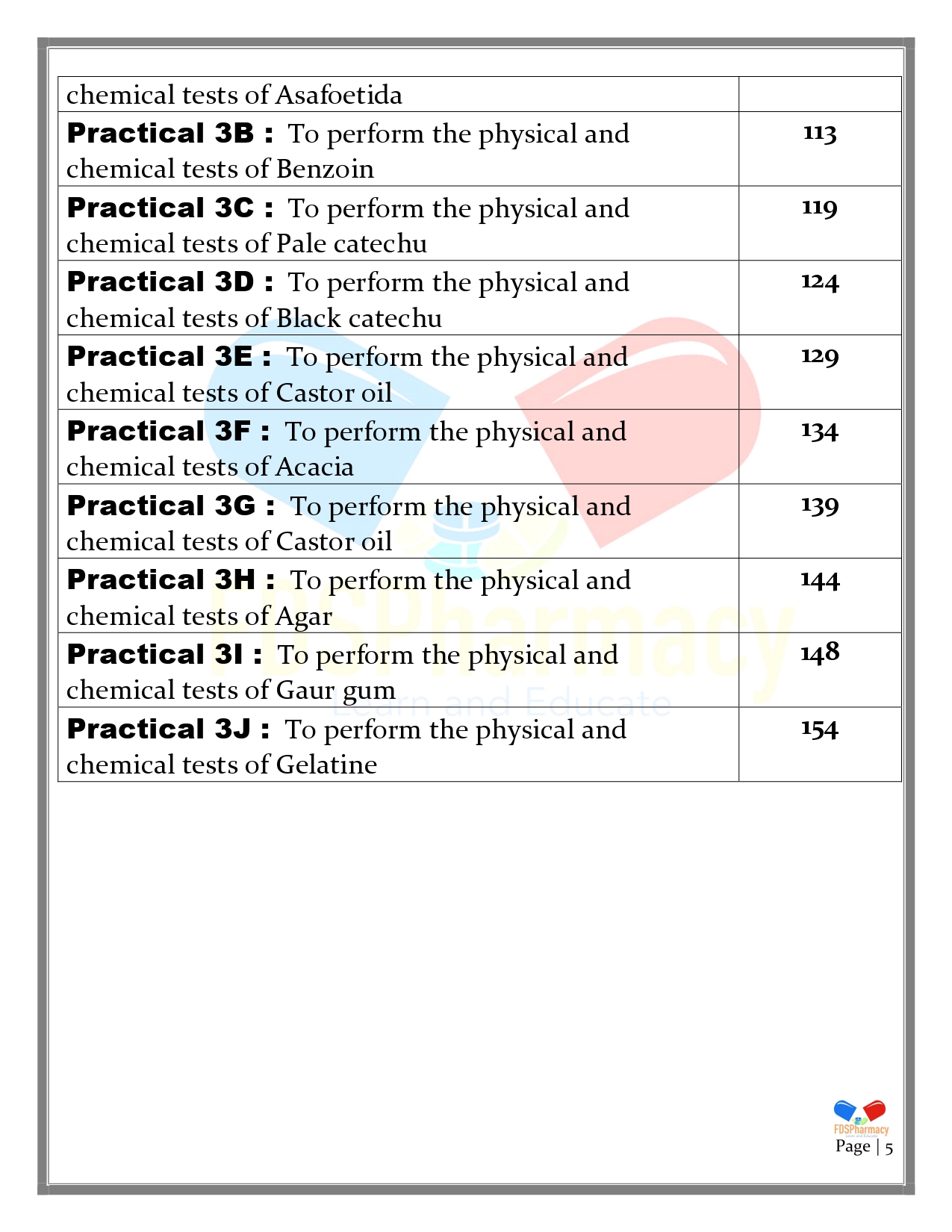

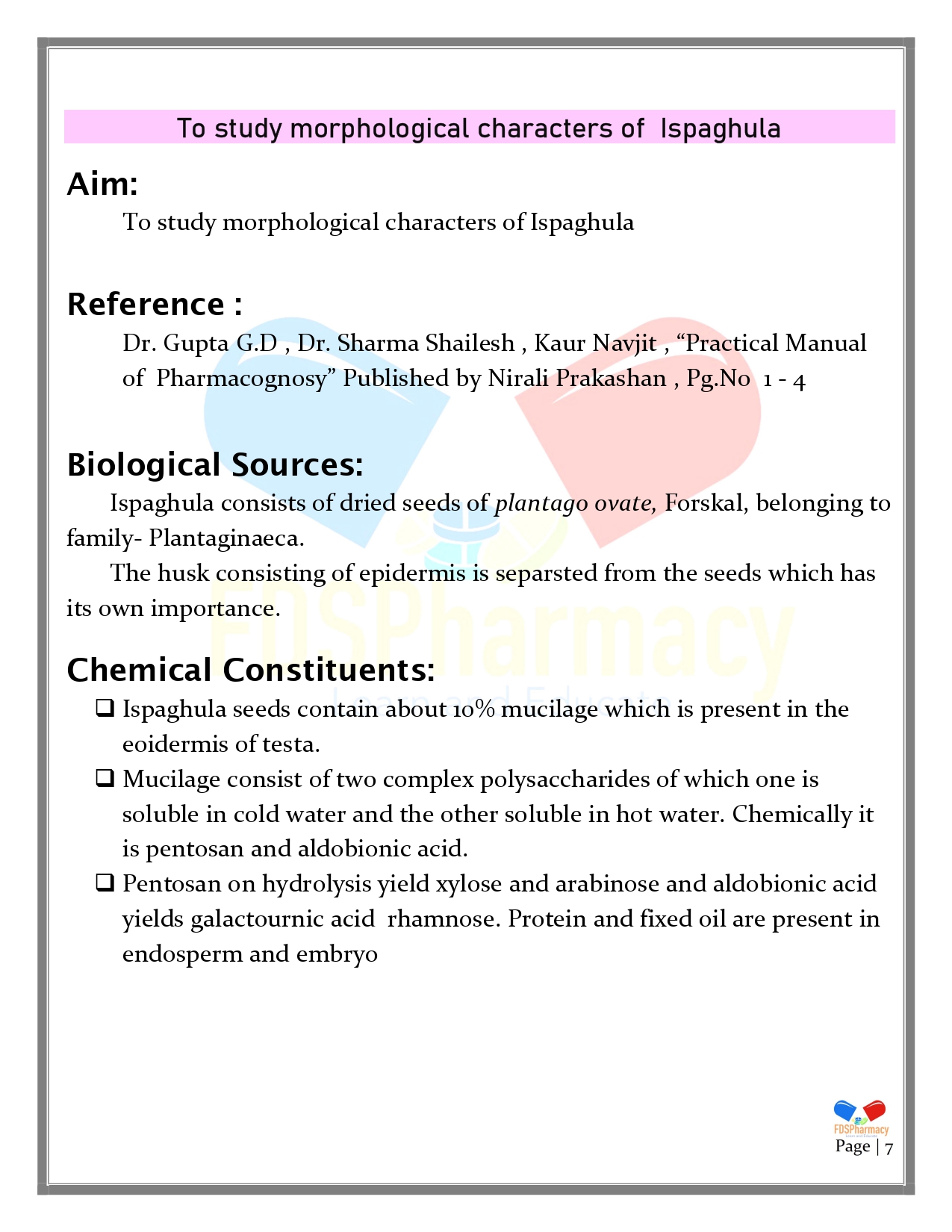
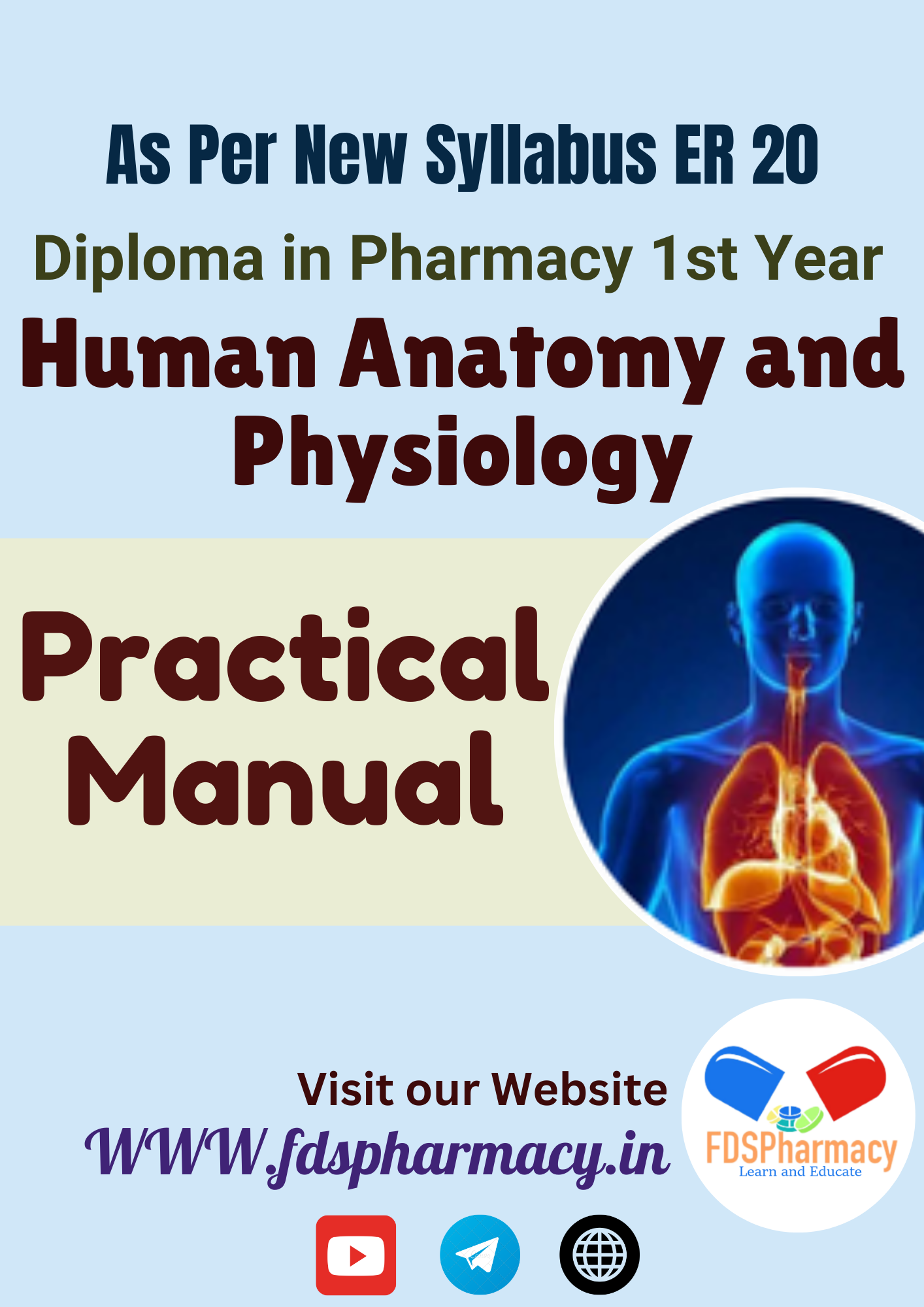
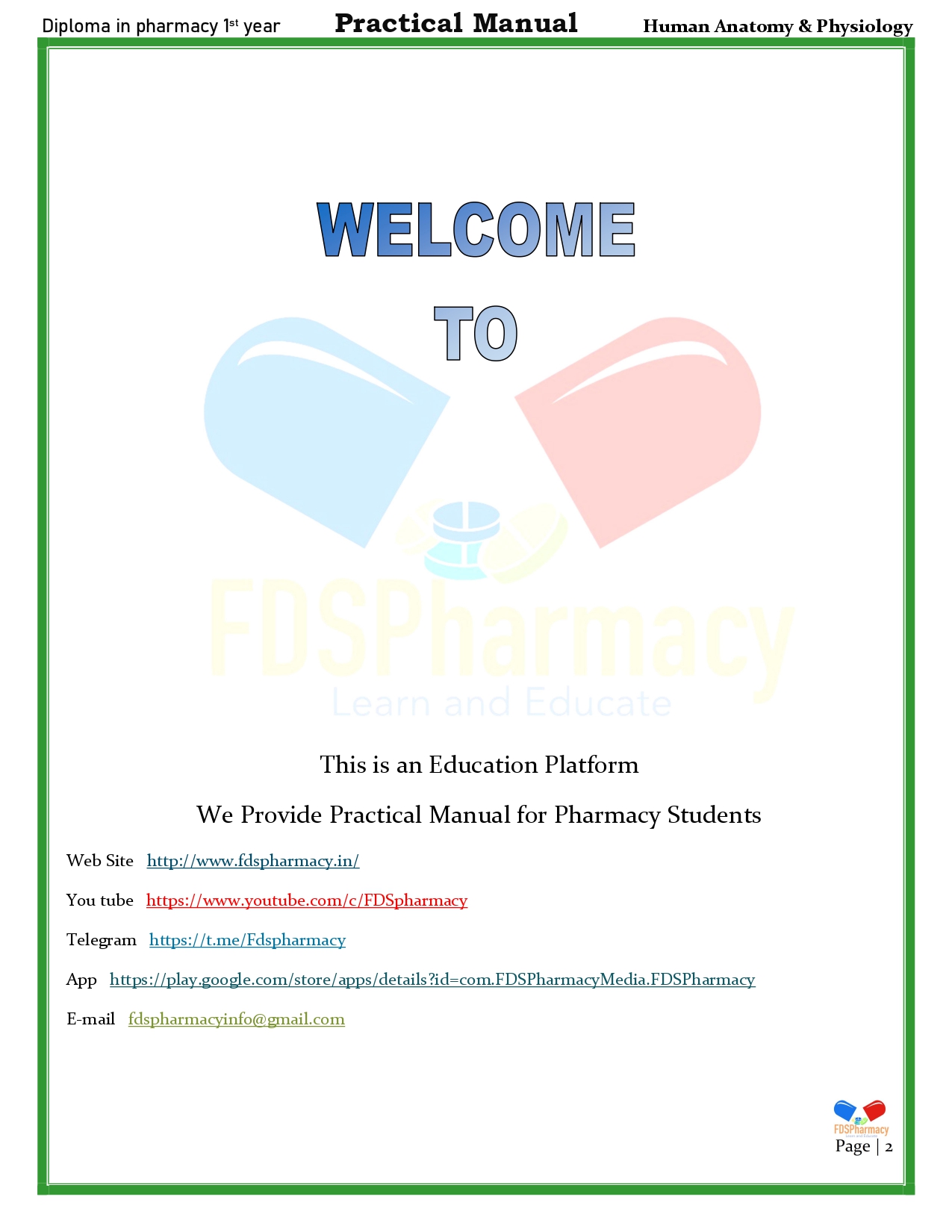
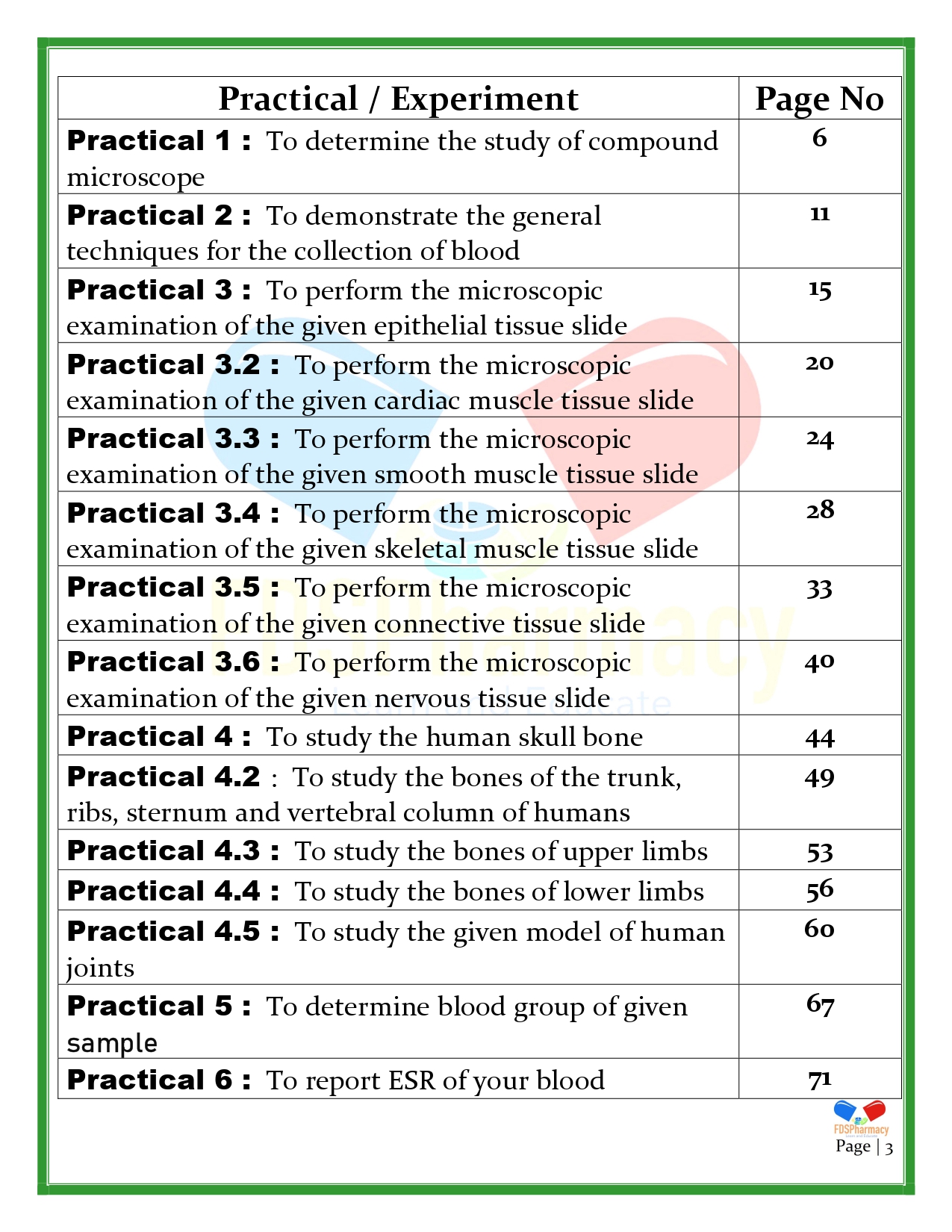
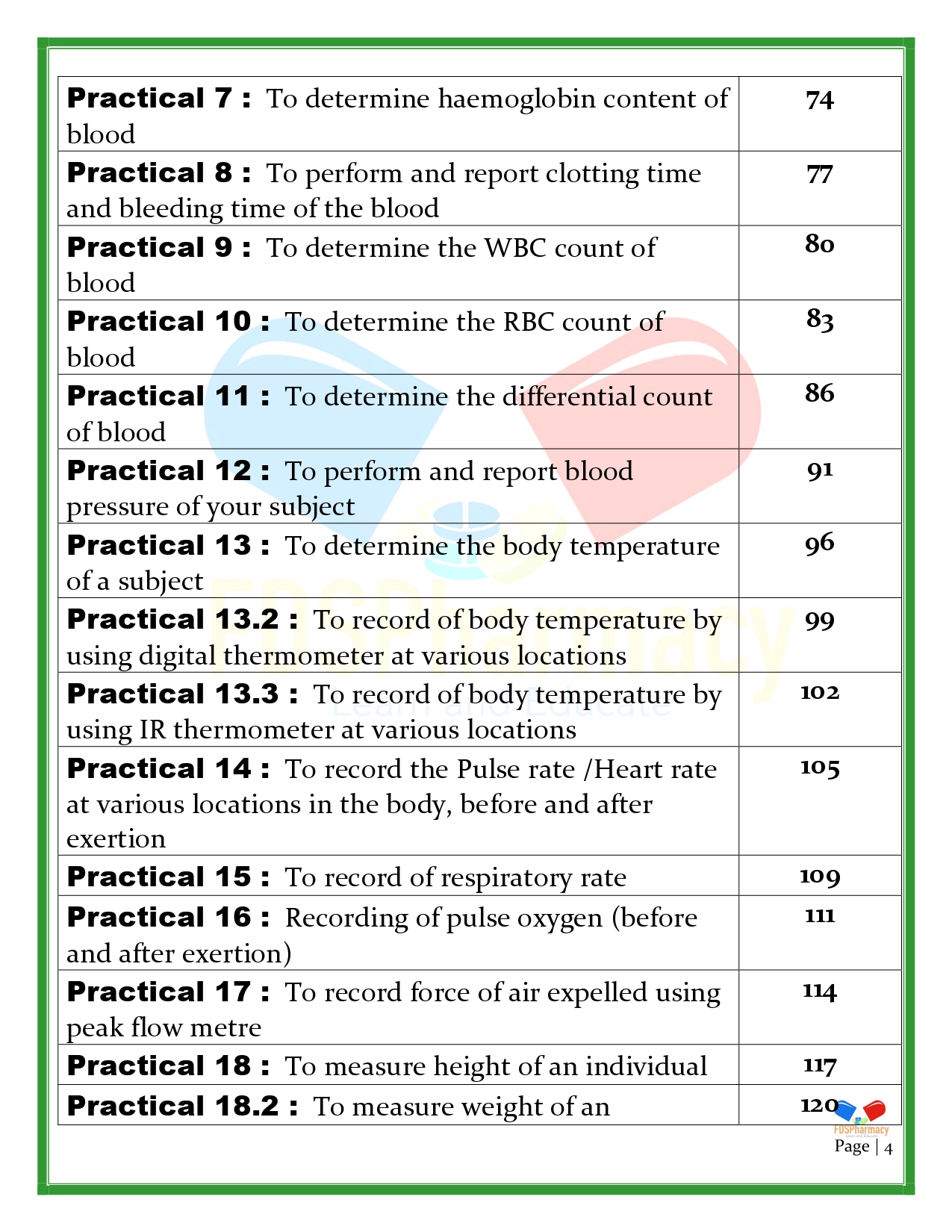
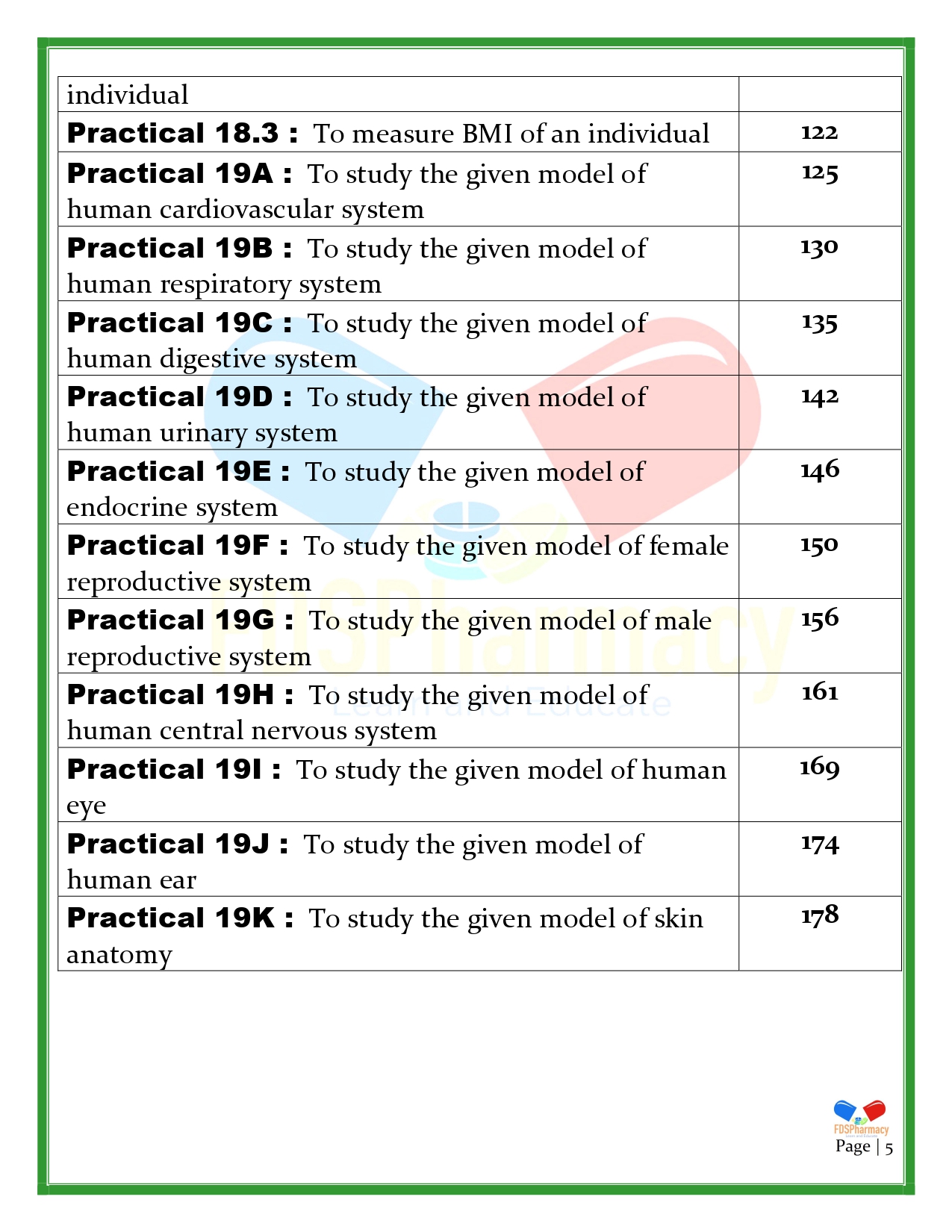
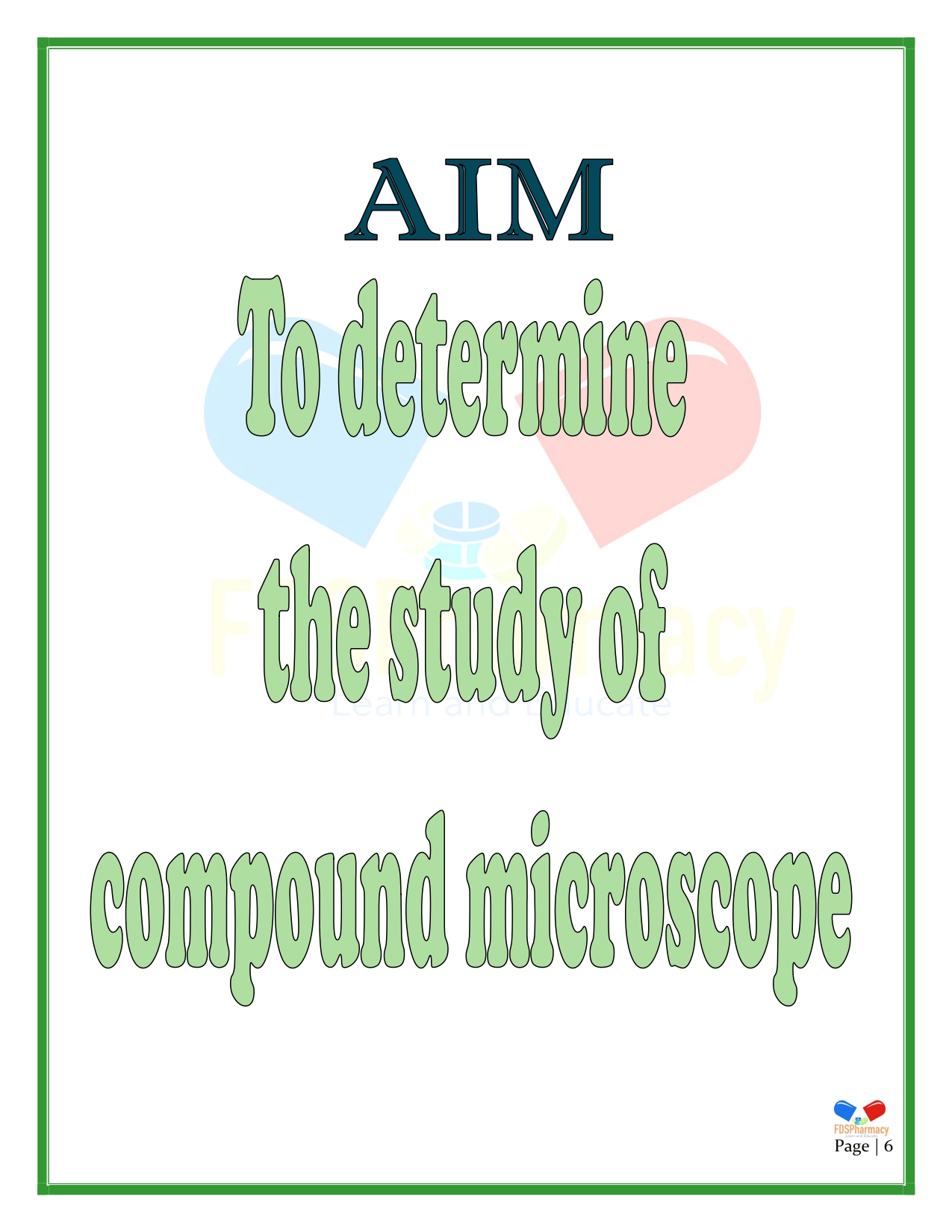
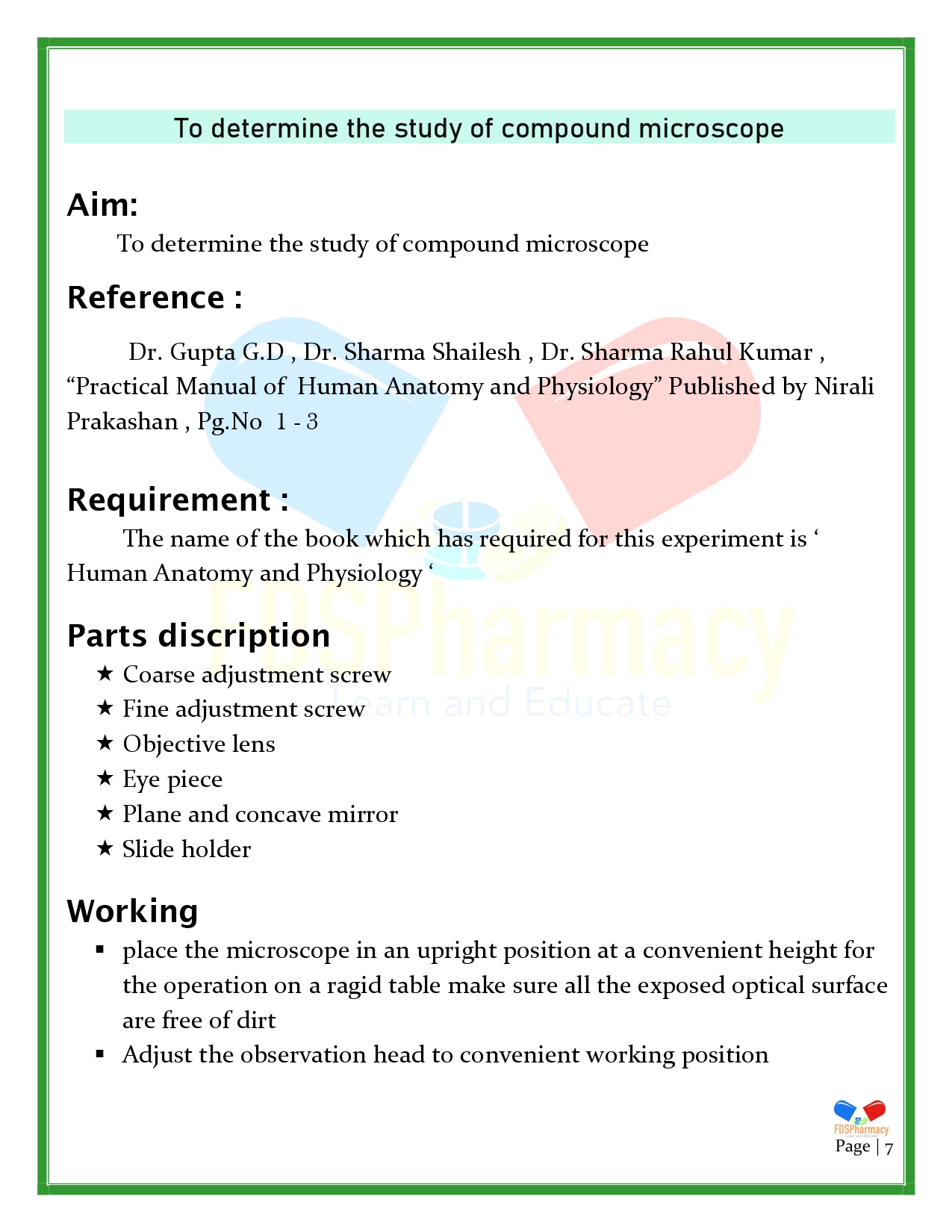
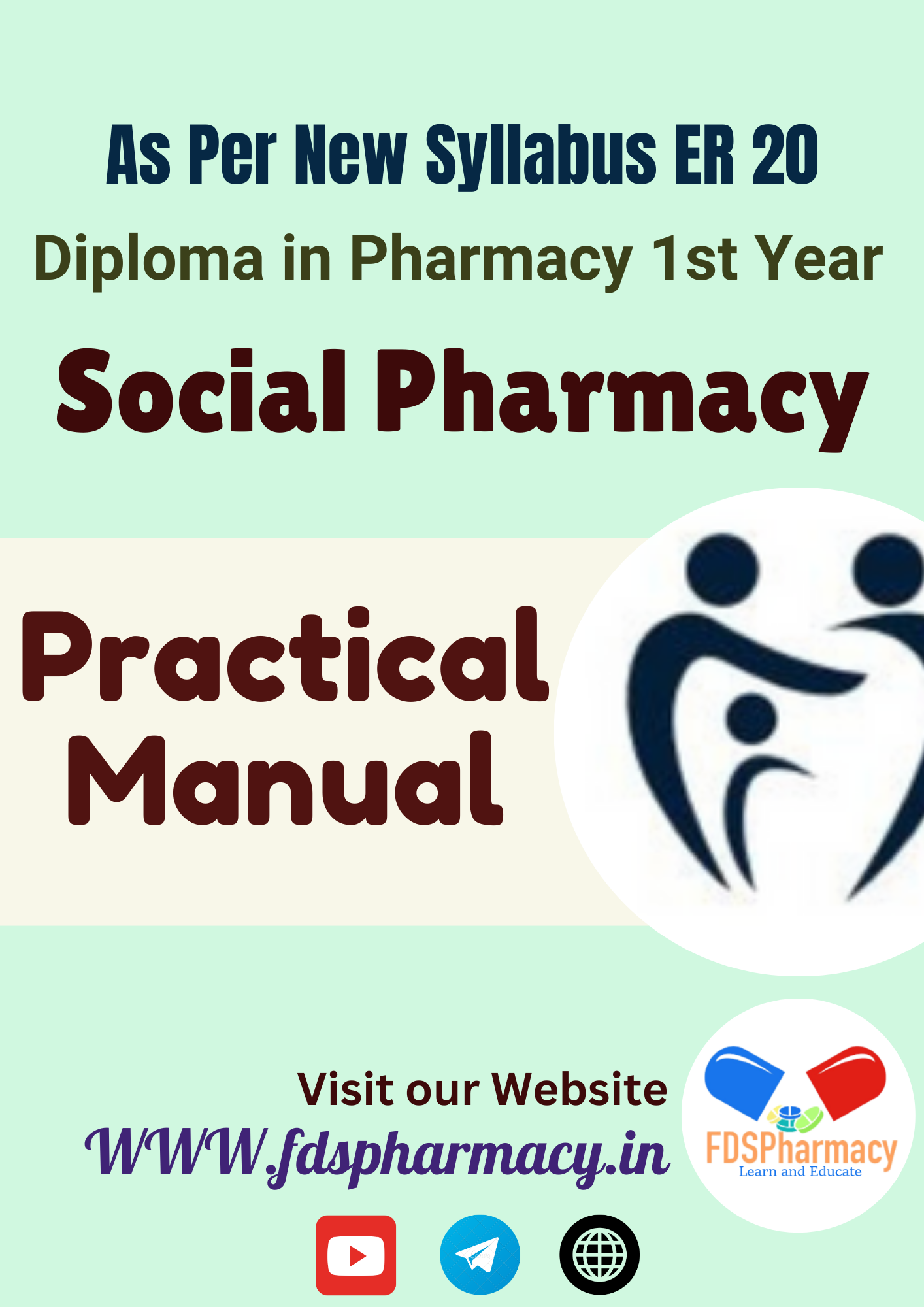





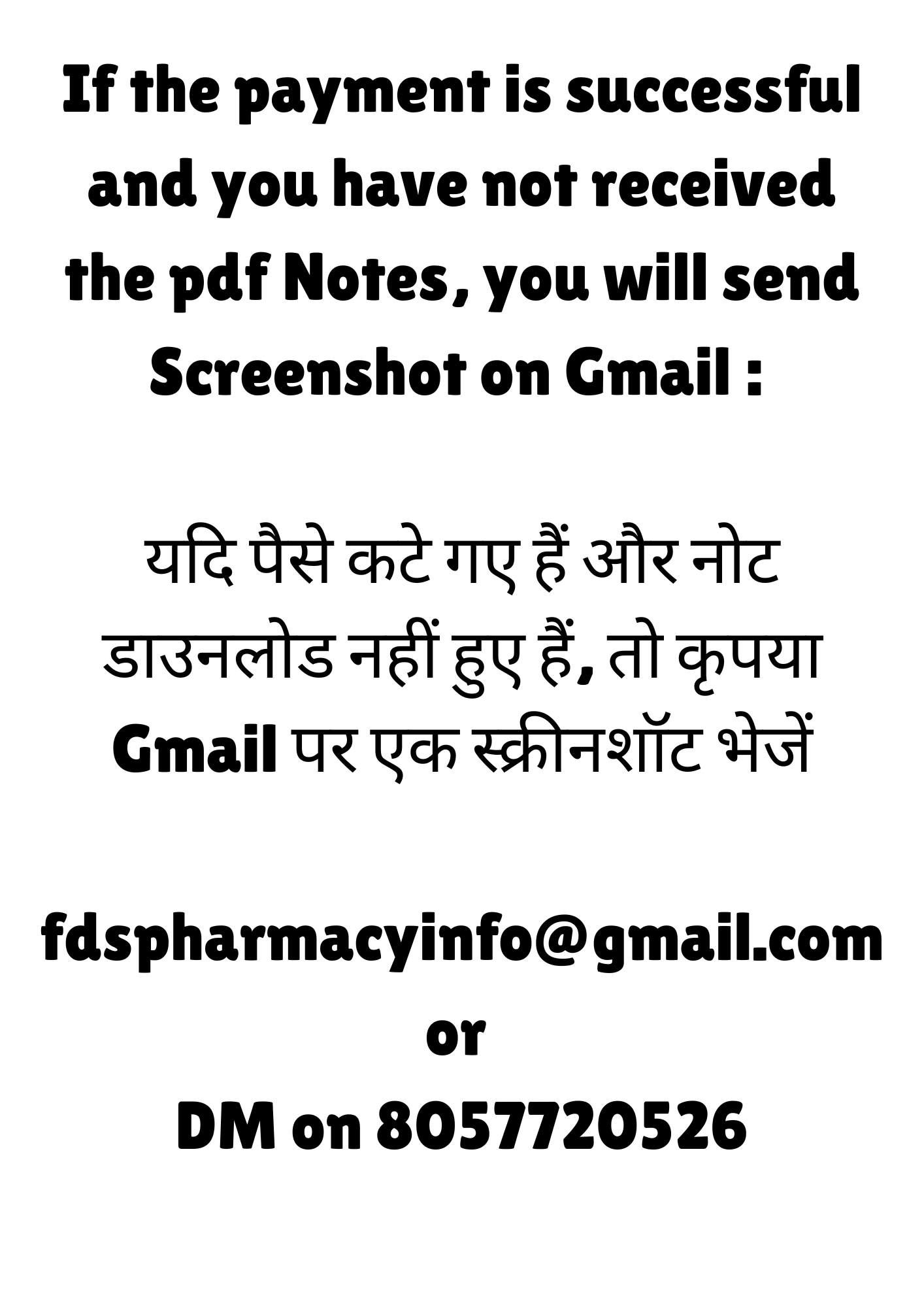

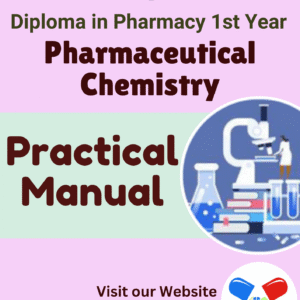
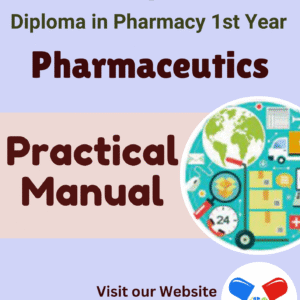
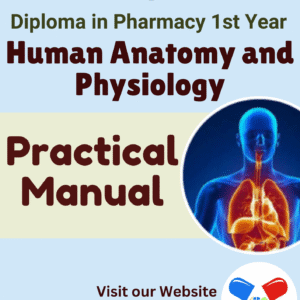
Reviews
There are no reviews yet.